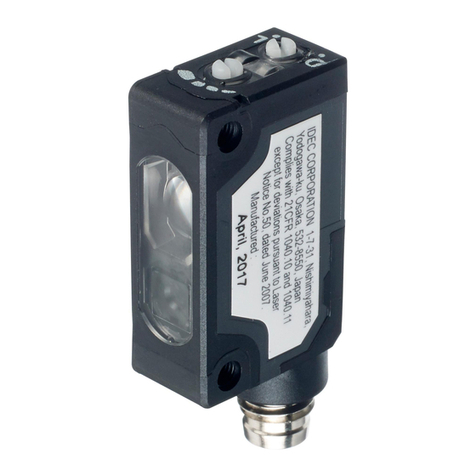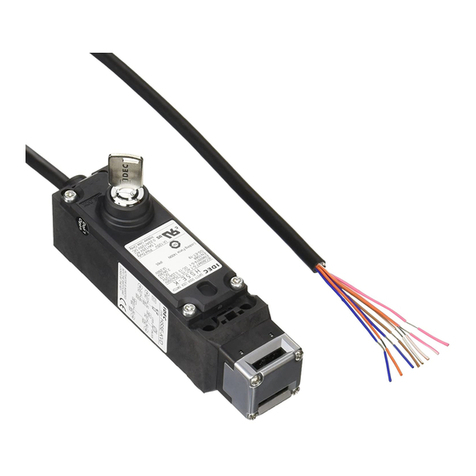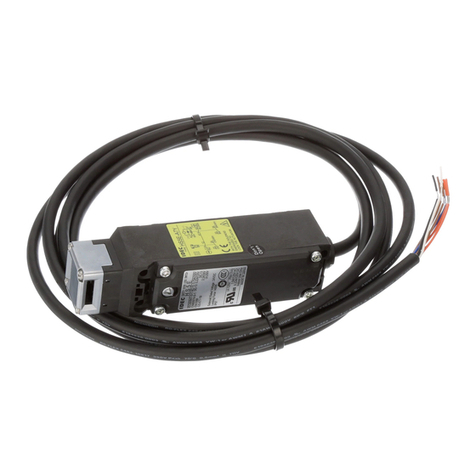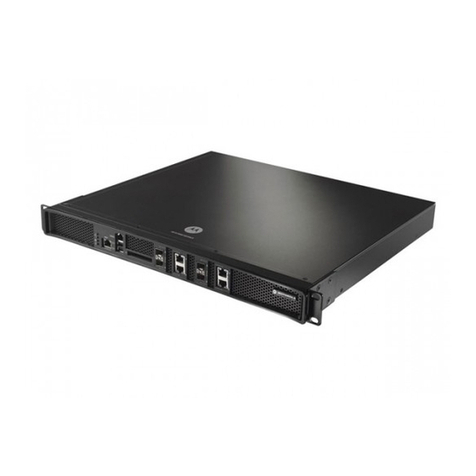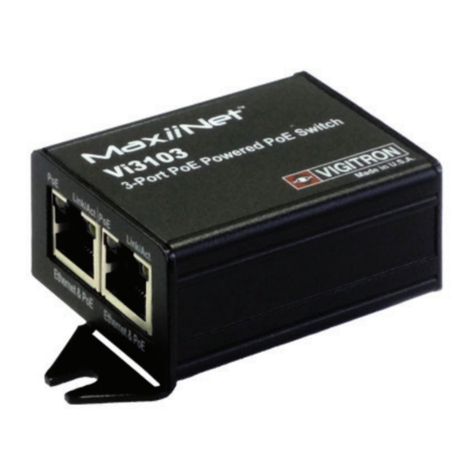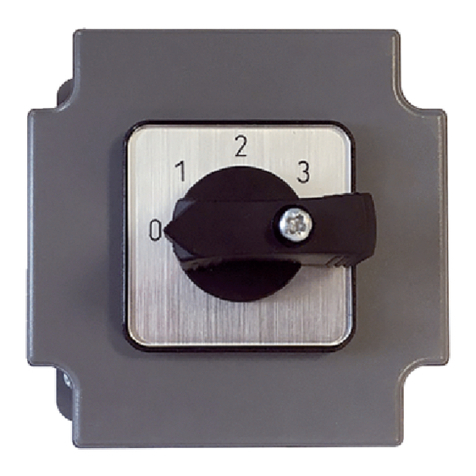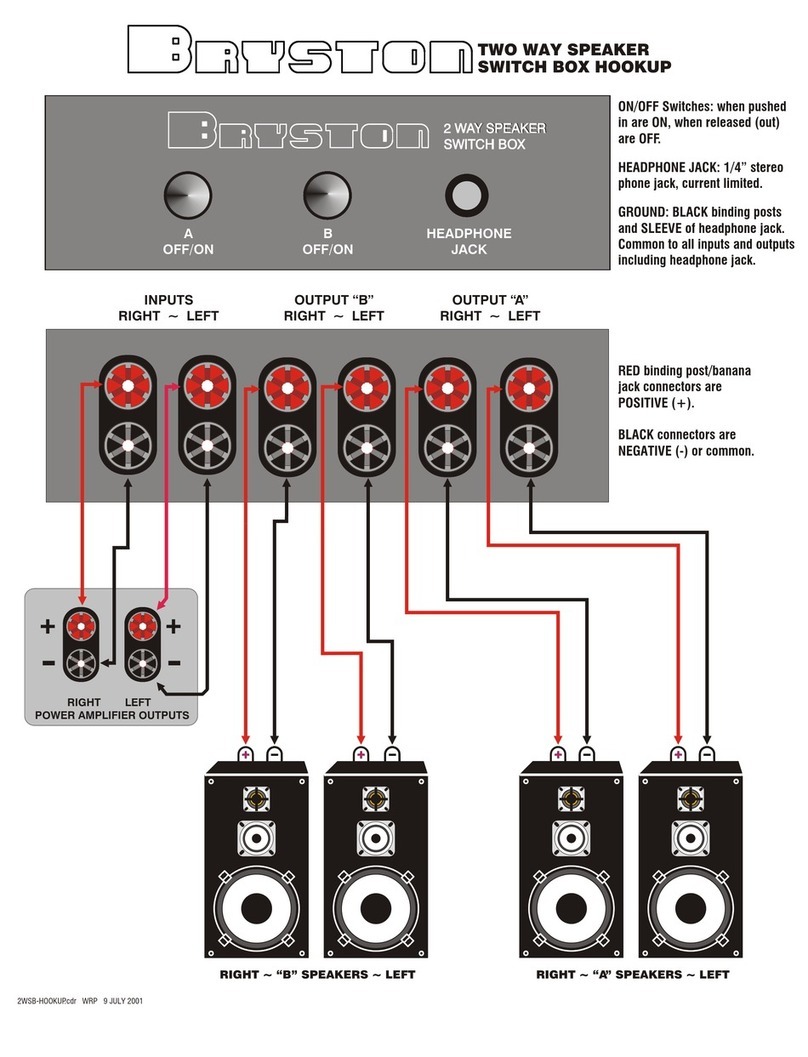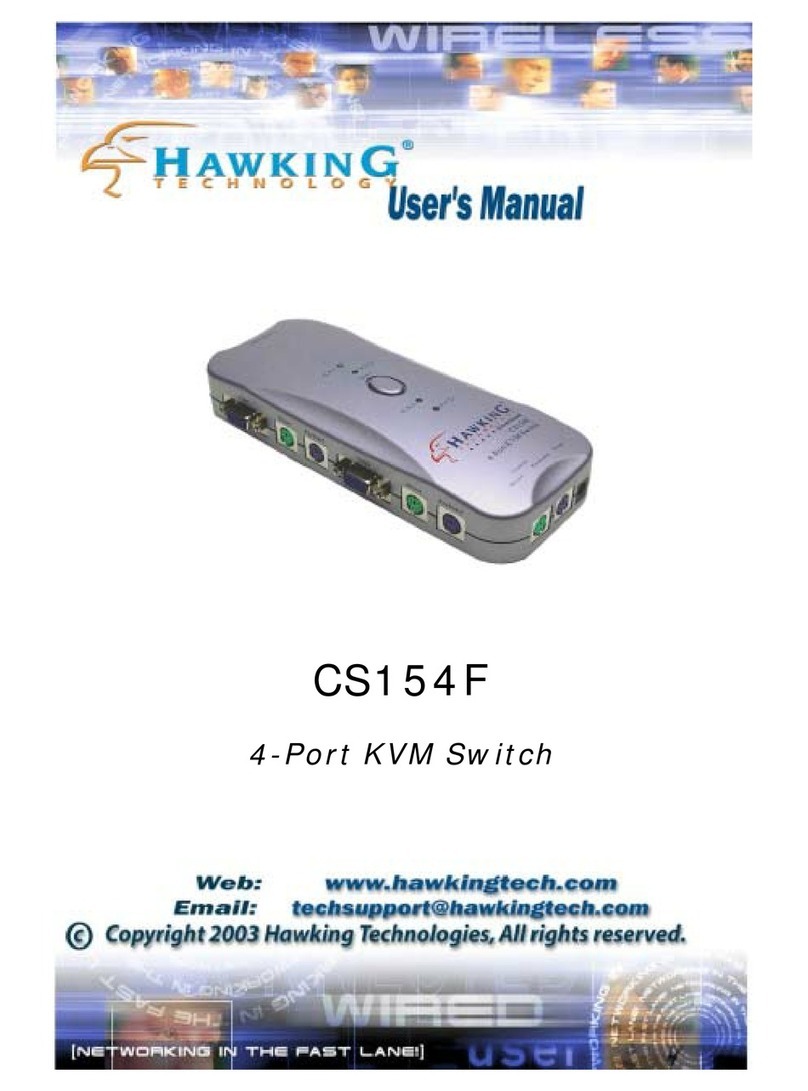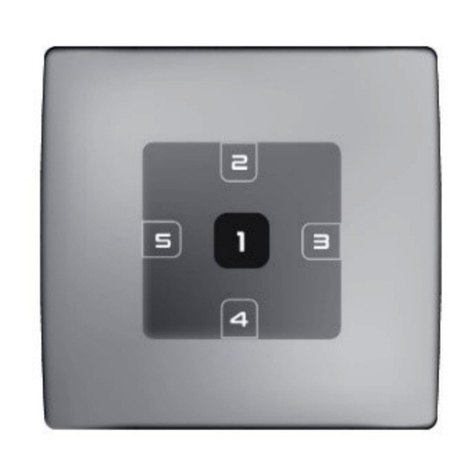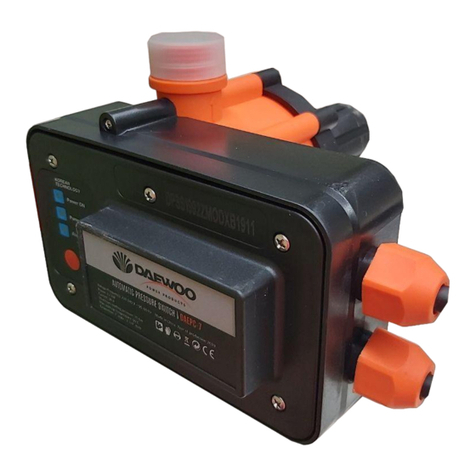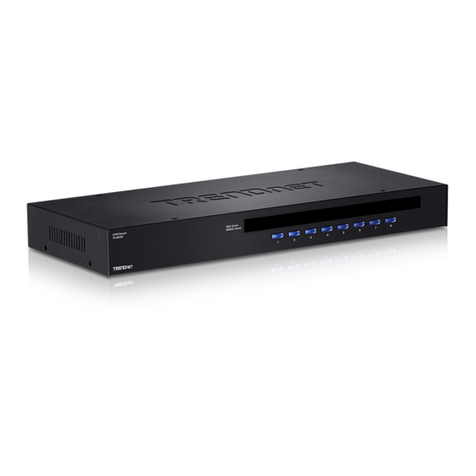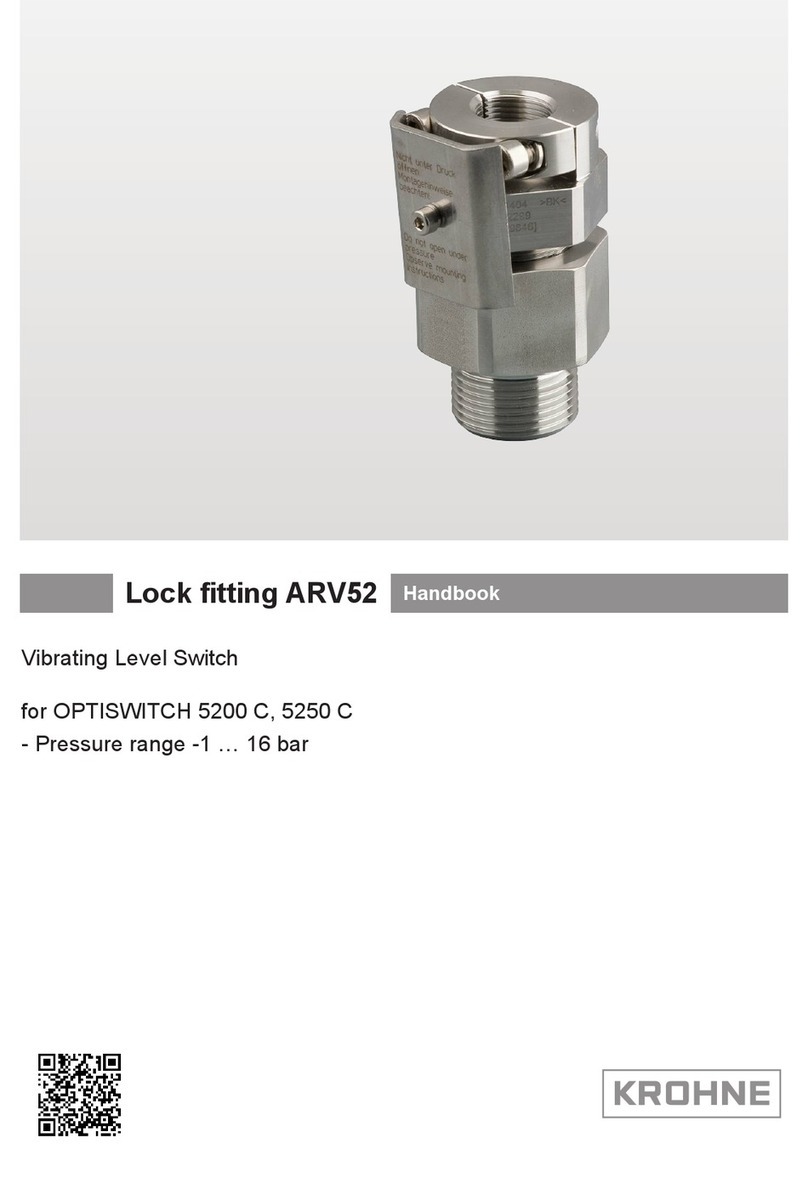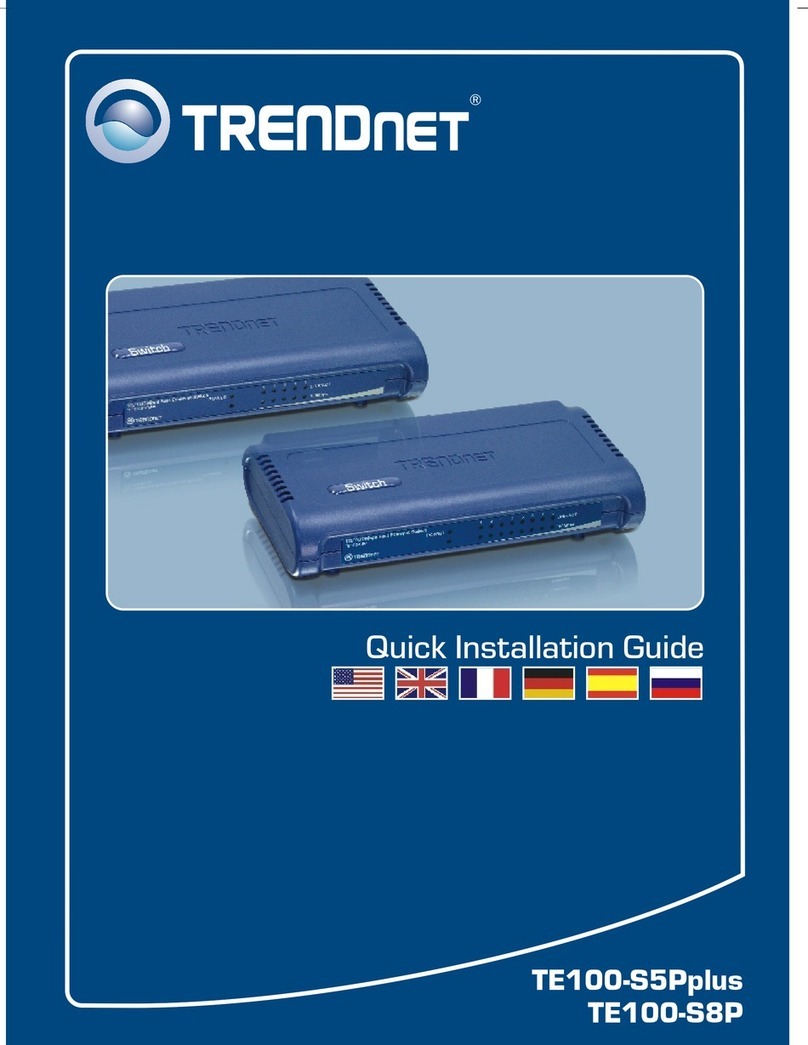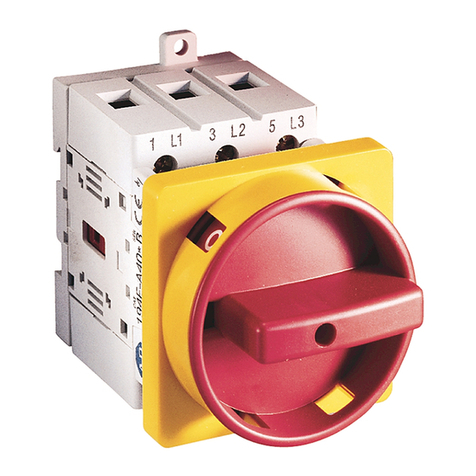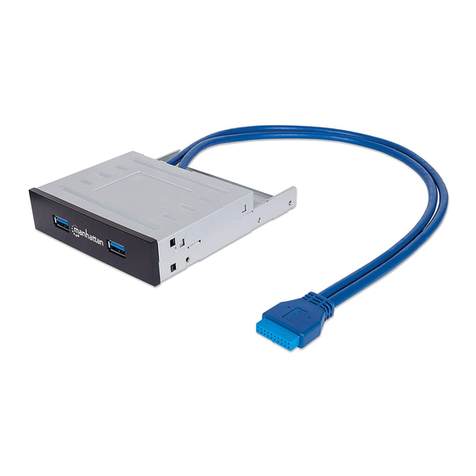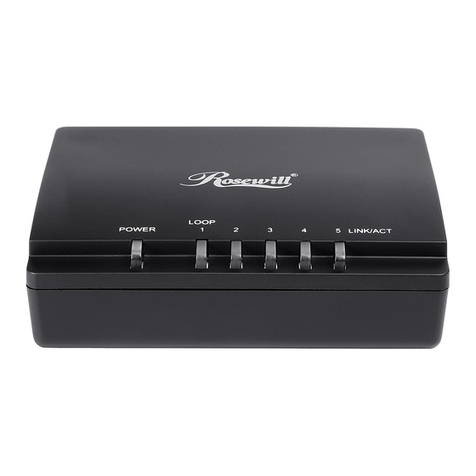IDEC HS5E Series User manual

702
HS5E Miniature Interlock Switches with Solenoid
Specifications
Applicable Standards
ISO14119, IEC60947-5-1, EN60947-5-1 (TÜV approval), EN1088 (TÜV approval), GS-ET-19 (BG ap-
proval), UL508 (UL recognized), CSA C22.2, No. 14 (c-UL recognized), GB14048.5 (CCC approval)
IEC60204-1/EN60204-1 (applicable standards for use)
Operating Temperature –25 to +50°C (no freezing)
Relative Humidity 45 to 85% (no condensation)
Storage Temperature –40 to +80°C (no freezing)
Pollution Degree 3
Impulse Withstand Voltage 2.5 kV (between LED, solenoid and grounding: 0.5 kV)
Insulation Resistance
(500V DC megger)
Between live and dead metal parts: 100 MΩminimum
Between live metal part and ground: 100 MΩminimum
Between live metal parts: 100 MΩminimum
Between terminals of the same pole: 100 MΩminimum
Electric Shock Protection Class II (IEC61140)
Degree of Protection IP67 (IEC60529)
Shock Resistance Operating extremes: 100 m/s2 (10G)
Damage limits: 1000 m/s2 (100G)
Vibration Resistance Operating extremes: 10 to 55 Hz, amplitude 0.35 mm minimum
Damage limits: 30 Hz, amplitude 1.5 mm minimum
Actuator Operating Speed 0.05 to 1.0 m/s
Direct Opening Travel Actuator HS9Z-A51: 11 mm minimum
Actuator HS9Z-A51A/A52/A52A/A53/A55: 12 mm minimum
Direct Opening Force 80N minimum
Actuator Retention Force 1400N minimum (GS-ET-19) (See page 709 for actuator retention force.)
Operating Frequency 900 operations per hour
Rear Unlock Button Mechanical Durability 3000 operations minimum (HS5E-∗∗L)
Mechanical Durability 1,000,000 operations minimum (GS-ET-19)
Electrical Durability 100,000 operations minimum (operating frequency 900 operations per hour, load AC-12, 250V, 1A)
1,000,000 operations minimum (operating frequency 900 operations per hour, load 24V AC/DC.
100mA)
Conditional Short-circuit Current 50A (250V) (Use 250V/10A fast acting type fuse for short-circuit protection.)
Cable UL2464
HS5E-V: AWG22 (12-core, 0.3 mm2/core)
Others: AWG21(8-core: 0.5 mm2/core)
Cable Outside Diameter ø7.6 mm
Weight (approx.) 400g (1m cable), 580g (3m cable), 770g (5m cable) . Add 20g for rear unlocking button.
Small safety switch with four poles and solenoid.
Ideal for applications in tight spaces.
Compact body. 35•×40 ×146 mm.
Rear unlocking button for emergency escape available. Also• available is the rear unlocking button kit.
A variety of circuits—dual safety circuit and four-circuit independent• outputs available.
Gold-plated contacts.•
Spring lock and solenoid lock are available.•
The head orientation can be rotated, allowing 8 different actuator• entries.
A metal entry slot ensures high durability.•
An actuator with rubber bushings alleviates the impact of actuator• entry into the slot.
The actuator retention force is 1400N minimum (GS-ET-19).•
Integral cable design minimizes wiring, preventing wiring mistakes.•
LED indicator indicates the solenoid status.•
Double insulation structure.•
Spring Lock
Automatically locks the actuator without power applied to the• solenoid.
After the machine stops, unlocking is completed by the solenoid,• providing high safety features.
Manual unlocking is possible in the event of power failure or•
maintenance.
Solenoid Lock
The actuator is locked when energized.•
The actuator is unlocked when de-energized.•
Flexible locking function can be achieved for an application where locking is not required and sudden stopping of machine must be• prevented.
Right-angle Actuator
(SUS304)
Straight Actuator
(SUS304)
w/Rubber Bushings
Angle Adjustable
(Vertical)
Rear unlocking
button
Sliding Actuator

Switches &
Pilot Lights
Display
Lights
Display
Units
LED
Illumination
Units
Safety
Products
Terminal
Blocks
Comm.
Terminals
AS-Interface
Relays &
Timers
Sockets
Circuit
Protectors
Power
Supplies
PLCs &
SmartRelay
Operator
Interfaces
Sensors
Control
Stations
Explosion
Protection
References
Flush
Silhouette
703
HS5E Miniature Interlock Switches with Solenoid
Ratings
Contact Ratings
Rated Insulation Voltage (Ui)
(Note 1)
250V
(between LED or solenoid and ground:
30V)
Rated
Thermal
Current
(Ith)
2.5A
Four-circuit
Independent Output
(HS5E-V)
Operating temp.:
–25°C to 35°C (not
included)
2.5A (1 or 2 circuits)
1.0A (3 or 4 circuits)
Operating temp.:
35°C to 50°C
1.0A (1 circuit)
0.5A (2 to 4 circuits)
Rated Voltage (Ue) 30V 125V 250V
Rated
Current
(Ie)
(Note 2)
AC
Resistive
Load (AC-12) −2A1A
Inductive
Load (AC-15) − 1A 0.5A
DC
Resistive
Load (DC-12) 2A 0.4A 0.2A
Inductive
Load (DC-13) 1A 0.22A 0.1A
Minimum applicable load (reference value): 3V AC/DC, 5 mA•
(Applicable range may vary with operating conditions and load types.)
Note 1: UL rating: 125V
Note 2: TÜV, BG rating: AC-15 0.5A/250V, DC-13 0.22A/125V
UL, c-UL rating: Pilot duty AC 0.5A/125V,
Pilot duty DC 0.22A/125V
Solenoid Unit
Locking Mechanism Spring Lock Solenoid Lock
Rated Operating Current 24V DC (100% duty cycle)
Rated Current 266 mA (initial value)
Coil Resistance 90Ω(at 20°C)
Pickup Voltage Rated voltage × 85% maximum (at 20°C)
Dropout Voltage Rated voltage × 10% minimum (at 20°C)
Maximum Continuous
Applicable Voltage Rated Voltage × 110%
Maximum Continuous
Applicable Time Continuous
Insulation Class Class F
Indicator
Rated Voltage 24V DC
Rated Current 10 mA
Light Source LED
Illumination Color Green
Part No. Development
HS5E-A44L01-G
Indicator ColorCircuit Code
Cable Length
Rear Unlocking Button
G: Green
01: 1m
03: 3m
05: 5m
LED Indicator Rated Voltage
4: 24V DC
0: Without indicator
A: 1NC + 1NC 1NO
Main Circuit Door Monitor Circuit Lock Monitor Circuit
B: 1NC + 1NC 1NO
C: 1NC + 1NC 1NC
D: 1NC + 1NC 1NC
F: 1NC + 1NC 2NC
G: 1NC + 1NC 1NC, 1NO
H: 1NC + 1NC —
J: 1NC + 1NC —
1NO
1NC
1NO
1NC
—
—
2NC
1NC, 1NO
DD: 1NC + 1NC
1NC + 1NC
VA: —
VB: —
VC: —
VD:
1NC, 1NO
1NC, 1NO
2NC
2NC
1NC, 1NO
2NC
1NC, 1NO
2NC—
4: 24V DC/Spring Lock
Solenoid Unit Voltage/Lock Mechanism
7Y: 24V DC/Solenoid Lock
L: With rear unlocking button
Blank: Without rear unlocking button
HS5E

704
HS5E Miniature Interlock Switches with Solenoid
Standard
Lock Mechanism Circuit Code Contact Configuration Indicator Cable
Length Part No.
Spring Lock
A
Without
1m HS5E-A4001
3m HS5E-A4003
5m HS5E-A4005
With
1m HS5E-A4401-G
3m HS5E-A4403-G
5m HS5E-A4405-G
B
Main Circuit: 1NC+1NC, Door Monitor Circuit: 1NO,
Lock Monitor Circuit: 1NC Without
1m HS5E-B4001
3m HS5E-B4003
5m HS5E-B4005
With
1m HS5E-B4401-G
3m HS5E-B4403-G
5m HS5E-B4405-G
C
Main Circuit: 1NC+1NC, Door Monitor Circuit: 1NC,
Lock Monitor Circuit: 1NO Without
1m HS5E-C4001
3m HS5E-C4003
5m HS5E-C4005
With
1m HS5E-C4401-G
3m HS5E-C4403-G
5m HS5E-C4405-G
D
Main Circuit: 1NC+1NC, Door Monitor Circuit: 1NC,
Lock Monitor Circuit: 1NC Without
1m HS5E-D4001
3m HS5E-D4003
5m HS5E-D4005
With
1m HS5E-D4401-G
3m HS5E-D4403-G
5m HS5E-D4405-G
F
Main Circuit: 1NC+1NC, Door Monitor Circuit: 2NC
Without
1m HS5E-F4001
3m HS5E-F4003
5m HS5E-F4005
With
1m HS5E-F4401-G
3m HS5E-F4403-G
5m HS5E-F4405-G
G
Main Circuit: 1NC+1NC, Door Monitor Circuit: 1NC, 1NO
Without
1m HS5E-G4001
3m HS5E-G4003
5m HS5E-G4005
With
1m HS5E-G4401-G
3m HS5E-G4403-G
5m HS5E-G4405-G
H
Main Circuit: 1NC+1NC, Lock Monitor Circuit: 2NC
Without
1m HS5E-H4001
3m HS5E-H4003
5m HS5E-H4005
With
1m HS5E-H4401-G
3m HS5E-H4403-G
5m HS5E-H4405-G
J
Main Circuit: 1NC+1NC, Lock Monitor Circuit: 1NC, 1NO
Without
1m HS5E-J4001
3m HS5E-J4003
5m HS5E-J4005
With
1m HS5E-J4401-G
3m HS5E-J4403-G
5m HS5E-J4405-G
The contact configuration shows the status when the actuator is inserted and the switch is locked.•
The contact configuration shows the status when the indicator is installed.•
Actuators are not supplied with the interlock switch and must be ordered separately.•
A1A2
(+) (–)
Door Monitor
(Actuator inserted) Lock Monitor
(Solenoid OFF)
24
11
23
12 4241
5453
Main Circuit:
Monitor Circuit:
Monitor Circuit:
Main Circuit: 1NC+1NC, Door Monitor Circuit: 1NO,
Lock Monitor Circuit: 1NO
51 52
41 4212
23
11
24
Main Circuit:
Monitor Circuit:
Monitor Circuit:
22
11
21
12 41
53 54
42
Main Circuit:
Monitor Circuit:
Monitor Circuit:
Monitor Circuit:
Monitor Circuit:
Main Circuit: 411211
21 22
51 52
42
11 12 4241
21 22
3231
Main Circuit:
Monitor Circuit:
Monitor Circuit:
41 421211
21 22
33 34
Main Circuit:
Monitor Circuit:
Monitor Circuit:
11 12 4241
61 62
51 52
Main Circuit:
Monitor Circuit:
Monitor Circuit:
41 421211
51 52
63 64
Main Circuit:
Monitor Circuit:
Monitor Circuit:

Switches &
Pilot Lights
Display
Lights
Display
Units
LED
Illumination
Units
Safety
Products
Terminal
Blocks
Comm.
Terminals
AS-Interface
Relays &
Timers
Sockets
Circuit
Protectors
Power
Supplies
PLCs &
SmartRelay
Operator
Interfaces
Sensors
Control
Stations
Explosion
Protection
References
Flush
Silhouette
705
HS5E Miniature Interlock Switches with Solenoid
Standard
Lock Mechanism Circuit Code Contact Configuration Indicator Cable
Length Part No.
Solenoid Lock
AMain Circuit: 1NC+1NC, Door Monitor Circuit: 1NO,
Lock Monitor Circuit: 1NO
Without
1m HS5E-A7Y001
3m HS5E-A7Y003
5m HS5E-A7Y005
With
1m HS5E-A7Y401-G
3m HS5E-A7Y403-G
5m HS5E-A7Y405-G
B
Main Circuit: 1NC+1NC, Door Monitor Circuit: 1NO,
Lock Monitor Circuit: 1NC Without
1m HS5E-B7Y001
3m HS5E-B7Y003
5m HS5E-B7Y005
With
1m HS5E-B7Y401-G
3m HS5E-B7Y403-G
5m HS5E-B7Y405-G
C
Main Circuit: 1NC+1NC, Door Monitor Circuit: 1NC,
Lock Monitor Circuit: 1NO Without
1m HS5E-C7Y001
3m HS5E-C7Y003
5m HS5E-C7Y005
With
1m HS5E-C7Y401-G
3m HS5E-C7Y403-G
5m HS5E-C7Y405-G
D
Main Circuit: 1NC+1NC, Door Monitor Circuit: 1NC,
Lock Monitor Circuit: 1NC Without
1m HS5E-D7Y001
3m HS5E-D7Y003
5m HS5E-D7Y005
With
1m HS5E-D7Y401-G
3m HS5E-D7Y403-G
5m HS5E-D7Y405-G
F
Main Circuit: 1NC+1NC, Door Monitor Circuit: 2NC
Without
1m HS5E-F7Y001
3m HS5E-F7Y003
5m HS5E-F7Y005
With
1m HS5E-F7Y401-G
3m HS5E-F7Y403-G
5m HS5E-F7Y405-G
G
Main Circuit: 1NC+1NC, Door Monitor Circuit: 1NC, 1NO
Without
1m HS5E-G7Y001
3m HS5E-G7Y003
5m HS5E-G7Y005
With
1m HS5E-G7Y401-G
3m HS5E-G7Y403-G
5m HS5E-G7Y405-G
H
Main Circuit: 1NC+1NC, Lock Monitor Circuit: 2NC
Without
1m HS5E-H7Y001
3m HS5E-H7Y003
5m HS5E-H7Y005
With
1m HS5E-H7Y401-G
3m HS5E-H7Y403-G
5m HS5E-H7Y405-G
J
Main Circuit: 1NC+1NC, Lock Monitor Circuit: 1NC, 1NO
Without
1m HS5E-J7Y001
3m HS5E-J7Y003
5m HS5E-J7Y005
With
1m HS5E-J7Y401-G
3m HS5E-J7Y403-G
5m HS5E-J7Y405-G
The contact configuration shows the status when the actuator is inserted and the switch is locked.•
The contact configuration shows the status when the indicator is installed.•
Actuators are not supplied with the interlock switch and must be ordered separately.•
A1A2
(+) (–)
Main Circuit:
24
11
23
12 4241
5453
Monitor Circuit:
Monitor Circuit:
Door Monitor
(Actuator inserted) Lock Monitor
(Solenoid ON)
51 52
41 4212
23
11
24
Main Circuit:
Monitor Circuit:
Monitor Circuit:
22
11
21
12 41
53 54
42
Main Circuit:
Monitor Circuit:
Monitor Circuit:
Monitor Circuit:
Monitor Circuit:
411211
21 22
51
Main Circuit:
52
42
11 12 4241
21 22
3231
Main Circuit:
Monitor Circuit:
Monitor Circuit:
41 421211
21 22
33 34
Main Circuit:
Monitor Circuit:
Monitor Circuit:
11 12 4241
61 62
51 52
Main Circuit:
Monitor Circuit:
Monitor Circuit:
41 421211
51 52
63 64
Main Circuit:
Monitor Circuit:
Monitor Circuit:
HS5E

706
HS5E Miniature Interlock Switches with Solenoid
Rear Unlocking Button
Lock Mechanism Circuit Code Contact Configuration Indicator Cable
Length Part No.
Spring Lock
AMain Circuit: 1NC+1NC, Door Monitor Circuit: 1NO,
Lock Monitor Circuit: 1NO
With
1m HS5E-A44L01-G
3m HS5E-A44L03-G
5m HS5E-A44L05-G
C
Main Circuit: 1NC+1NC, Door Monitor Circuit: 1NC,
Lock Monitor Circuit: 1NO 1m HS5E-C44L01-G
3m HS5E-C44L03-G
5m HS5E-C44L05-G
D
Main Circuit: 1NC+1NC, Door Monitor Circuit: 1NC,
Lock Monitor Circuit: 1NC 1m HS5E-D44L01-G
3m HS5E-D44L03-G
5m HS5E-D44L05-G
F
Main Circuit: 1NC+1NC, Door Monitor Circuit: 2NC 1m HS5E-F44L01-G
3m HS5E-F44L03-G
5m HS5E-F44L05-G
G
Main Circuit: 1NC+1NC, Door Monitor Circuit: 1NC, 1NO 1m HS5E-G44L01-G
3m HS5E-G44L03-G
5m HS5E-G44L05-G
The contact configuration shows the status when the actuator is inserted and the switch is locked.•
Actuators are not supplied with the interlock switch and must be ordered separately.•
Dual Safety Circuit
Lock Mechanism Circuit Code Contact Configuration Indicator Cable
Length Part No.
Spring Lock DD Main Circuit: 1NC+1NC
1NC+1NC
With
1m HS5E-DD4401-G
3m HS5E-DD4403-G
5m HS5E-DD4405-G
The contact configuration shows the status when the actuator is inserted and the switch is locked.•
Actuators are not supplied with the interlock switch and must be ordered separately.•
A1A2
(+) (–)
Door Monitor
(Actuator inserted) Lock Monitor
(Solenoid OFF)
24
11
23
12 4241
5453
Main Circuit:
Monitor Circuit:
Monitor Circuit:
22
11
21
12 41
53 54
42
Main Circuit:
Monitor Circuit:
Monitor Circuit:
Monitor Circuit:
Monitor Circuit:
Main Circuit: 411211
21 22
51 52
42
11 12 4241
21 22
3231
Main Circuit:
Monitor Circuit:
Monitor Circuit:
41 421211
21 22
33 34
Main Circuit:
Monitor Circuit:
Monitor Circuit:
A1A2
(+) (–)
Door Monitor
(Actuator inserted)
Lock Monitor
(Solenoid OFF)
51 52
41 4212
21
11
22
Main Circuit j:
Main Circuit k:

Switches &
Pilot Lights
Display
Lights
Display
Units
LED
Illumination
Units
Safety
Products
Terminal
Blocks
Comm.
Terminals
AS-Interface
Relays &
Timers
Sockets
Circuit
Protectors
Power
Supplies
PLCs &
SmartRelay
Operator
Interfaces
Sensors
Control
Stations
Explosion
Protection
References
Flush
Silhouette
707
HS5E Miniature Interlock Switches with Solenoid
Four-circuit Independent Output
Lock Mechanism Circuit Code Contact Configuration Indicator Cable
Length Part No.
Spring Lock
VA Door Monitor Circuit: 1NC, 1NO, Lock Monitor Circuit: 1NC, 1NO
With
1m HS5E-VA4401-G
3m HS5E-VA4403-G
5m HS5E-VA4405-G
VB
Door Monitor Circuit: 1NC, 1NO, Lock Monitor Circuit: 2NC 1m HS5E-VB4401-G
3m HS5E-VB4403-G
5m HS5E-VB4405-G
VC
Door Monitor Circuit: 2NC, Lock Monitor Circuit: 1NC, 1NO 1m HS5E-VC4401-G
3m HS5E-VC4403-G
5m HS5E-VC4405-G
VD
Door Monitor Circuit: 2NC, Lock Monitor Circuit: 2NC 1m HS5E-VD4401-G
3m HS5E-VD4403-G
5m HS5E-VD4405-G
Solenoid Lock
VA Door Monitor Circuit: 1NC, 1NO, Lock Monitor Circuit: 1NC, 1NO
With
1m HS5E-VA7Y401-G
3m HS5E-VA7Y403-G
5m HS5E-VA7Y405-G
VB
Door Monitor Circuit: 1NC, 1NO, Lock Monitor Circuit: 2NC 1m HS5E-VB7Y401-G
3m HS5E-VB7Y403-G
5m HS5E-VB7Y405-G
VC
Door Monitor Circuit: 2NC, Lock Monitor Circuit: 1NC, 1NO 1m HS5E-VC7Y401-G
3m HS5E-VC7Y403-G
5m HS5E-VC7Y405-G
VD
Door Monitor Circuit: 2NC, Lock Monitor Circuit: 2NC 1m HS5E-VD7Y401-G
3m HS5E-VD7Y403-G
5m HS5E-VD7Y405-G
The contact configuration shows the status when the actuator is inserted and the switch is locked.•
Actuators are not supplied with the interlock switch and must be ordered separately.•
A1A2
(+) (–)
Door Monitor
(Actuator inserted) Lock Monitor
(Solenoid OFF)
24
11
23
12 4241
5453
Monitor Circuit:
Monitor Circuit:
Monitor Circuit:
51 52
41 4212
23
11
24
Monitor Circuit:
Monitor Circuit:
Monitor Circuit:
22
11
21
12 41
53 54
42
Monitor Circuit:
Monitor Circuit:
Monitor Circuit:
411211
21 22
51 52
42
Monitor Circuit:
Monitor Circuit:
Monitor Circuit:
A1A2
(+) (–)
24
11
23
12 4241
5453
Monitor Circuit:
Monitor Circuit:
Monitor Circuit:
Lock Monitor
(Solenoid ON)
Door Monitor
(Actuator inserted)
51 52
41 4212
23
11
24
Monitor Circuit:
Monitor Circuit:
Monitor Circuit:
22
11
21
12 41
53 54
42
Monitor Circuit:
Monitor Circuit:
Monitor Circuit:
411211
21 22
51 52
42
Monitor Circuit:
Monitor Circuit:
Monitor Circuit:
HS5E

708
HS5E Miniature Interlock Switches with Solenoid
Vertical Mounting/Right-angle Actuator (HS9Z-A52)
33
20
40
33
61.6
5
5
61.6
11±1*
30
32.9
13.4
13.4
32.9
106
RP
RP
26.4
6.25.2
5.26.2
26.4
20
35
11
20
Mounting Hole Layout
4-M4
(ø4.3 or M4 tapped hole)
6±1*
(6.3)
145.7
10636.2
41
28
20
20
28
40
42.2
36.2 106
145.7 (6.3)
20
35
1
1
R2.2
20 to 22
R2.2
Slot Plug
(supplied with
the switch) (Note)
Actuator Actuator
Actuator Stop
(supplied separately)
Actuator Stop
(supplied
separately)
* Actuator center position
Use four mounting screws to mount the interlock switch
according to the mounting hole layout.
Mounting Hole Layout
5
5
Actuator Stop
(supplied separately)
Actuator Stop
(supplied separately)
Actuator
40
20
33
40
20
33
Slot Plug
(supplied with
the switch) (Note)
61.6
61.6
30
32.9
13.4 13.4
32.9
4-M4
(ø4.3 or M4 tapped hole)
106
RPRP
27.7
27.7
11
35
20
11
35
20
40.3
Actuator
Actuator Cover
7.6 ±1*
36.2 106
145.7 (6.3)
Acuator Cover
12.6 ±1*
41.5
(6.3)
145.7
10636.2
R2.2
R2.2
20 to 22
20
29.6
29.6
20
* Actuator center position
Use four mounting screws to mount the interlock switch
according to the mounting hole layout.
HS9Z-A51 Actuator
Actuator Stop
Interlock Switch Door Stop
Door Stop HS9Z-A52 Actuator
Actuator Cover
Actuator Stop
Interlock Switch
Dimensions
HS5E-4-G (with indicator)
Horizontal Mounting/Straight Actuator (HS9Z-A51)
HS5E-44L-G (rear unlocking button)
Horizontal Mounting/Straight Actuator (HS9Z-A51)
21.5
27
ø30
7.7
13.4
106
M4
22
20
Rear Unlocking Button
Rear Unlocking Button
(supplied with the switch)
30
32.9
13.45.2
6.2
41
11 ±1
40
20
11
35
20
(6.3)
145.7
106
HS9Z-A51 Actuator
28
20
36.2
6±1
42.2
61.6
5
33
RP (Actuator Mounting Reference Position)
R2.2
4-ø4.3 or M4 tapped holes
106
20 to 22
13.4
ø18
Rear Unlocking Button
Hole (Note)
LOCK UNLOCK
Actuator Mounting Reference Position
As shown in the figure on the right, the mounting reference
position of the actuator when inserted in the interlock switch is
where the actuator stop placed on the actuator lightly touches the
interlock switch.
Note: After mounting the actuator, remove the actuator stop from
the actuator.
•Plug the unused actuator entry slot using the plug supplied with the switch.
All dimensions in mm.
Note: With the mounting hole dimension, the rear unlocking button rod does not
touch the hole even when the interlock switch moves sideways.
X ≤6 Panel mounting
6 < X < 23 Not mountable
23 ≤X ≤53 Use HS9Z-FL5∗rear unlocking button kit
X = Panel thickness
(including panel, mounting frame, and mounting plate)
Note: See page 710 for details.

Switches &
Pilot Lights
Display
Lights
Display
Units
LED
Illumination
Units
Safety
Products
Terminal
Blocks
Comm.
Terminals
AS-Interface
Relays &
Timers
Sockets
Circuit
Protectors
Power
Supplies
PLCs &
SmartRelay
Operator
Interfaces
Sensors
Control
Stations
Explosion
Protection
References
Flush
Silhouette
709
HS5E Miniature Interlock Switches with Solenoid
Actuators
Description Actuator Retention Force Part No.
Straight
1400N minimum
HS9Z-A51
Straight w/rubber bushings HS9Z-A51A
Right-angle HS9Z-A52
Right-angle w/rubber bushings HS9Z-A52A
Angle Adjustable (vertical) HS9Z-A53
Angle Adjustable (vertical/horizontal) (Note 1) 500N minimum HS9Z-A55
Sliding Actuator (Note 2) 1000N minimum HS9Z-SH5
Note 1: When retention force of more than
500N is required, use HS9Z-A53.
Note 2: For details, see page 746.
26
15
32.4
28
20
10
0.85.2
(6)
6.2
6.4
2
20
Actuator Stop
(supplied with the actuator)
(Note)
4-R 2.2
Actuator Mounting Hole Layout
(Straight, L-shaped)
2-M4 Screw
49
15 7
18.5 29
3
3.6
1
R2.1
23
26
38
38
0.8
2
Angle Adjustment
(M3 Hexagon Socket Head Screw)
Angle Adjustment
(M3 Hexagon Socket Head Screw)
Actuator Stop
(Note)
Actuator Stop
(Note)
2-M4 Screw
Actuator Mounting Hole Layout
(horizontal/vertical swing)
Vertical Adjustment
Horizontal Adjustment
Orienting
Insert
Orienting
Insert
20°
20°
(M4 Holes)
Actuator Stop
Film (supplied
with the actuator)
Door hinge side
20
5
R3.2
72
58
44
33 max.
12 (21)
1
20°
29
Angle Adjustment
(hexagon sockethead bolt)
58
2-M6 Screw
Actuator Mounting Hole Layout
(vertical swing)
18
30
7.3 43.8
15.3
15
2-ø4.3
2
12
0.8
(20)
0.8
2-ø10
2-ø9
When mounted (5)
Vertical Swing
Washer (supplied with the switch)
Rubber Bushing
Actuator Stop (Note)
• The mounting center distance is set to 12 mm
at factory. When 20-mm distance is required,
adjust the distance by moving the rubber
bushings.
• The actuator has flexiblity to the direction
indicated by the arrows. When 20-mm distance
is selected, the actuator swings vertically.
12
2-M4 Screw
Actuator Mounting Hole Layout
Straight (with rubber bushings)
Right-angle (with rubber bushings)
Note: Mounting centers can be widened
to 20 mm by moving the rubber
bushings.
Dimensions and Mounting Hole Layouts
Note: The actuator stop is supplied with the actuator and used when adjusting the actuator
position. Remove after the actuator position is determined.
• When the mounting center distance is set to
12 mm, the actuator has flexibility both
vertically and horizontally.
• When the mounting center distance is set to
20 mm, the actuator swings vertically. Adjust
the distance by moving the rubber bushings.
30
15
Horizontal
Swing
Vertical
Swing
15.8
8.5
0.8
2
0.8
When mounted (11.2)
When mounted
(39.7)
When mounted (5)
2-ø9
2-ø10
2-ø4.3
12
(20)
Actuator Stop (plastic) (Note)
(supplied with the actuator)
Rubber Bushing
Washer (supplied
with the actuator)
15
Acuator Stop (supplied with the actuator) (Note)
Actuator Cover
2
2-ø4.4
20
33
30
28
0.84.5
27.27.2
1.6
Straight Actuator (HS9Z-A51)
Straight Actuator w/Rubber Bushings (HS9Z-A51A)
Angle Adjustable (vertical) (HS9Z-A53) Angle Adjustable (vertical/horizontal) (HS9Z-A55)
Right-angle Actuator (HS9Z-A52)
Right-angle Actuator w/Rubber Bushings (HS9Z-A52A)
Actuator Orientation
The orientation of actuator swing (horizontal/vertical) can be changed using the
orienting insert (white plastic) installed on the back of the actuator. Do not lose
the orientating insert, otherwise the actuator will not swing properly.
HS5E

710
HS5E Miniature Interlock Switches with Solenoid
Accessories
Description Part No. Remarks
Sliding Actuator HS9Z-SH5 See page 746 for details.
Door Handle Actuator
(See page 738)
Handle unit for right-hand door HS9Z-DH5RH Choose according to the required opening side.
Handle unit for left-hand door HS9Z-DH5LH
Switch cover unit HS9Z-DH5C Used for installing the interlock switch inside.
Padlock Hasp HS9Z-A5P
Mounting Plate (Note 1) HS9Z-PH5
Mounting Plate HS9Z-SP51
When using the HS5E-44L-G, provide a mounting hole for the
unlocking button as shown below in the mounting plate mounting
hole layout.
Manual Unlocking Key (metal) HS9Z-T3
Rear Unlocking Button Kit (Note 2)
HS9Z-FL53
Used when the total thickness of mounting frame, panel, and
mounting plate ∗is: 23 < X ≤33
(20 < X ≤30 when switch cover unit HS9Z-DH5C is used)
HS9Z-FL54
Used when the total thickness of mounting frame, panel, and
mounting plate ∗is: 33 < X ≤43
(30 < X ≤40 when switch cover unit HS9Z-DH5C is used)
HS9Z-FL55
Used when the total thickness of mounting frame, panel, and
mounting plate ∗is: 43 < X ≤53
(40 < X ≤50 when switch cover unit HS9Z-DH5C is used)
Note 1: When mounting HS5E-KVA0L (rear unlocking button) using a mounting plate, provide mounting holes on the mounting plate as shown below and use Rear
Unlocking Button Kit (HS9Z-FL5).
Note 2: See the table at right for choosing rear unlocking button kit.
ø18 Rear Unlocking
Button Hole (Note)
16 to 30
3325.5
60.5
Rear Unlocking Button Kit
Mounting Hole Layout
2 or 4-M4 Screws
Button released
Button pressed
(unlocked)
40
ø40
31.5
ø10.4
27.3
21.3
30
16
25.5 33
60.5
73
Pin (SUS)
Total thickness of mounting frame,
panel, and mounting plate: 23 to 53 mm
Hinge + Plate
(SUS)
Button (PA66)
HS5E-L
Interlock Switch
(sold separately)
Screw (Iron)
Link Rod (SUS)
Rear Unlocking Button Kit (HS9Z-FL5)
Note: With the mounting hole dimension,
the rear unlocking button rod does
not touch the hole even when the
interlock switch moves sideways.
Example:
When mounting on 30mm-thick frame using HS9Z-SP51 mounting plate, the panel
thickness is 40 (10 + 30). Select HS9Z-FL54 rear unlocking button kit.
4-R6.4
2-12.8
2-6.6
4-R3.3
4-M4
6
10
40
170
21
106
187
50.7
42.2
22
4-C3
40
21
ø18 Rear Unlocking
Button Hole (Note)
64.1
13.4
187
4-M4 Screws
When installing the HS5E-44L-G
(rear unlocking button), provide a rear
unlocking button hole on the HS9Z-SP51.
Manual Unlocking Key (plastic)
15 9 3
18 6.5
ø10
Manual Unlocking Key (metal)
(HS9Z-T3)
4
130
15
ø4
Dimensions
Mounting Plate (HS9Z-SP51)
Drilling Rear Unlocking
Button Hole
Material: Anodized aluminum A6063
Weight: Approx. 180g

Switches &
Pilot Lights
Display
Lights
Display
Units
LED
Illumination
Units
Safety
Products
Terminal
Blocks
Comm.
Terminals
AS-Interface
Relays &
Timers
Sockets
Circuit
Protectors
Power
Supplies
PLCs &
SmartRelay
Operator
Interfaces
Sensors
Control
Stations
Explosion
Protection
References
Flush
Silhouette
711
HS5E Miniature Interlock Switches with Solenoid
Circuit Diagrams and Operating Characteristics
Standard and Rear Unlocking - Spring Lock
Interlock Switch Status
Status 1 Status 2 Status 3 Status 4
Door Closed• Machine ready to• operate
Solenoid de-energized•
Door Closed• Machine cannot be• operated
Solenoid energized•
Door Open• Machine cannot be• operated
Solenoid energized•
Door Open• Machine cannot be• operated
Solenoid de-energized•
Door Status
Circuit Diagram (HS5E-A4)
Door Closed (locked) Closed (unlocked) Open Open
Contact Configuration
Main Circuit
11−42 ON (closed) OFF (open) OFF (open) OFF (open)
Monitor Circuit
(door open)
23-24 OFF (open) OFF (open) ON (closed) ON (closed)
Monitor Circuit
(unlocked)
53−54 OFF (open) ON (closed) ON (closed) ON (closed)
Main Circuit
11−42 ON (closed) OFF (open) OFF (open) OFF (open)
Monitor Circuit
(door open)
23−24 OFF (open) OFF (open) ON (closed) ON (closed)
Monitor Circuit
(locked)
51−52 ON (closed) OFF (open) OFF (open) OFF (open)
Main Circuit
11−42 ON (closed) OFF (open) OFF (open) OFF (open)
Monitor Circuit
(door closed)
21−22 ON (closed) ON (closed) OFF (open) OFF (open)
Monitor Circuit
(unlocked)
53−54 OFF (open) ON (closed) ON (closed) ON (closed)
Main Circuit
11−42 ON (closed) OFF (open) OFF (open) OFF (open)
Monitor Circuit
(door closed)
21−22 ON (closed) ON (closed) OFF (open) OFF (open)
Monitor Circuit
(locked)
51−52 ON (closed) OFF (open) OFF (open) OFF (open)
Main Circuit
11−42 ON (closed) OFF (open) OFF (open) OFF (open)
Monitor Circuit
(door closed)
21−22 ON (closed) ON (closed) OFF (open) OFF (open)
Monitor Circuit
(door closed)
31−32 ON (closed) ON (closed) OFF (open) OFF (open)
Main Circuit
11−42 ON (closed) OFF (open) OFF (open) OFF (open)
Monitor Circuit
(door closed)
21−22 ON (closed) ON (closed) OFF (open) OFF (open)
Monitor Circuit
(door open)
33−34 OFF (open) OFF (open) ON (closed) ON (closed)
Main Circuit
11−42 ON (closed) OFF (open) OFF (open) OFF (open)
Monitor Circuit
(locked)
51−52 ON (closed) OFF (open) OFF (open) OFF (open)
Monitor Circuit
(locked)
61−62 ON (closed) OFF (open) OFF (open) OFF (open)
Main Circuit
11−42 ON (closed) OFF (open) OFF (open) OFF (open)
Monitor Circuit
(locked)
51−52 ON (closed) OFF (open) OFF (open) OFF (open)
Monitor Circuit
(unlocked)
63−64 OFF (open) ON (closed) ON (closed) ON (closed)
Solenoid Power A1-A2 (all model) OFF (de-energized) ON (energized) ON (energized) OFF (de-energized)
The above contact configuration shows the status when the actuator is inserted and locked.•
Main Circuit: Connected to the control circuit of machine drive part, sending interlock signals of the protective door.•
Monitor Circuit: Sends monitoring signals of protective door open/closed status or protective door lock/unlock status.•
11
23
42
54
12
24
41
53
A2 A1
(+) (–)
A1
(–)
A2
(+)
53
41
24
12
54
42
23
11 11
23
42
54
12
24
41
53
A2 A1
(+) (–)
Door Monitor
(Actuator Inserted)
Lock Monitor
(Solenoid OFF)
HS5E-A4
HS5E-B4
HS5E-C4
HS5E-D4
HS5E-F4
HS5E-G4
HS5E-H4
HS5E-J4
A1A2
24
11
23
12 4241
(+)
5453
(–)
51 52
41 4212
23
11
24
22
11
21
12 41
53
411211
11 12 4241
41 421211
11 12 4241
41 421211
21 22
51
21 22
3231
21 22
33 34
61 62
51 52
51 52
63 64
54
42
52
42
Main Circuit:
Monitor Circuit:
Monitor Circuit:
Main Circuit:
Monitor Circuit:
Monitor Circuit:
Main Circuit:
Monitor Circuit:
Monitor Circuit:
Main Circuit:
Monitor Circuit:
Monitor Circuit:
Main Circuit:
Monitor Circuit:
Monitor Circuit:
Main Circuit:
Monitor Circuit:
Monitor Circuit:
Main Circuit:
Monitor Circuit:
Monitor Circuit:
Main Circuit:
Monitor Circuit:
Monitor Circuit:
Manual Unlock
Door Closed• Machine cannot be• operated
Solenoid de-energized•
Closed (unlocked)
OFF (open)
OFF (open)
ON (closed)
OFF (open)
OFF (open)
OFF (open)
OFF (open)
ON (closed)
ON (closed)
OFF (open)
ON (closed)
OFF (open)
OFF (open)
ON (closed)
ON (closed)
OFF (open)
ON (closed)
OFF (open)
OFF (open)
OFF (open)
OFF (open)
OFF (open)
OFF (open)
ON (closed)
OFF (de-energized)
UNLOCK
LOCK
LOCK UNLOCK
Turn the manual
unlock key
(Note 1)
Press the rear
unlocking button
(Note 2)
Press
11
23
42
54
12
24
41
53
A2 A1
(+) (–)
Note 1: Actuator can be unlocked manually for confirming the
door movement before wiring and energizing, and also
for emergency situation such as power failure.
Note 2: When the operator is confined in a hazardous zone, the
actuator can be unlocked manually by pressing the rear
unlocking button.
The operation characteristics shown in the chart above are of the•
HS9Z-A51. For other actuators, add 1.3 mm.
The operation characteristics show the contact status when the•
actuator enters the entry slot of an interlock switch.
26.4 (travel in mm)5.3 6.9
3.3 (Locked position)
0
Monitor Circuit (unlocked, NO)
Monitor Circuit (door open, NO)
Monitor Circuit (locked, NC)
Monitor Circuit (door closed, NC)
Operation Chracteristics (reference)
(Actuator insertion position)
Contacts OFF (open)
Contacts ON (closed)
Main Circuit
HS5E

712
HS5E Miniature Interlock Switches with Solenoid
Standard - Solenoid Lock
Interlock Switch Status
Status 1 Status 2 Status 3 Status 4
Door Closed•
Machine ready to•
operate
Solenoid energized•
Door Closed•
Machine cannot be•
operated
Solenoid de-energized•
Door Open•
Machine cannot be•
operated
Solenoid de-energized•
Door Open•
Machine cannot be•
operated
Solenoid energized•
Door Status
Circuit Diagram (HS5E-A7Y)
Door Closed (locked) Closed (unlocked) Open Open
Contact Configuration
Main Circuit
11−42 ON (closed) OFF (open) OFF (open) OFF (open)
Monitor Circuit
(door open)
23-24 OFF (open) OFF (open) ON (closed) ON (closed)
Monitor Circuit
(unlocked)
53−54 OFF (open) ON (closed) ON (closed) ON (closed)
Main Circuit
11−42 ON (closed) OFF (open) OFF (open) OFF (open)
Monitor Circuit
(door open)
23−24 OFF (open) OFF (open) ON (closed) ON (closed)
Monitor Circuit
(locked)
51−52 ON (closed) OFF (open) OFF (open) OFF (open)
Main Circuit
11−42 ON (closed) OFF (open) OFF (open) OFF (open)
Monitor Circuit
(door closed)
21−22 ON (closed) ON (closed) OFF (open) OFF (open)
Monitor Circuit
(unlocked)
53−54 OFF (open) ON (closed) ON (closed) ON (closed)
Main Circuit
11−42 ON (closed) OFF (open) OFF (open) OFF (open)
Monitor Circuit
(door closed)
21−22 ON (closed) ON (closed) OFF (open) OFF (open).
Monitor Circuit
(locked)
51−52 ON (closed) OFF (open) OFF (open) OFF (open)
Main Circuit
11−42 ON (closed) OFF (open) OFF (open) OFF (open)
Monitor Circuit
(door closed)
21−22 ON (closed) ON (closed) OFF (open) OFF (open)
Monitor Circuit
(door closed)
31−32 ON (closed) ON (closed) OFF (open) OFF (open)
Main Circuit
11−42 ON (closed) OFF (open) OFF (open) OFF (open)
Monitor Circuit
(door closed)
21−22 ON (closed) ON (closed) OFF (open) OFF (open)
Monitor Circuit
(door open)
33−34 OFF (open) OFF (open) ON (closed) ON (closed)
Main Circuit
11−42 ON (closed) OFF (open) OFF (open) OFF (open)
Monitor Circuit
(locked)
51−52 ON (closed) OFF (open) OFF (open) OFF (open)
Monitor Circuit
(locked)
61−62 ON (closed) OFF (open) OFF (open) OFF (open)
Main Circuit
11−42 ON (closed) OFF (open) OFF (open) OFF (open)
Monitor Circuit
(locked)
51−52 ON (closed) OFF (open) OFF (open) OFF (open)
Monitor Circuit
(unlocked)
63−64 OFF (open) ON (closed) ON (closed) ON (closed)
Solenoid Power A1-A2 (all model) ON (energized) OFF (de-energized) OFF (de-energized) ON (energized)
(Note 2)
The above contact configuration shows the status when the actuator is inserted and locked.•
Main Circuit: Connected to the control circuit of machine drive part, sending interlock signals of the protective door.•
Monitor Circuit:• Sends monitoring signals of protective door open/closed status or protective door lock/unlock status.
11
23
42
54
12
24
41
53
A2 A1
(+) (–)
A1
(–)
A2
(+)
53
41
24
12
54
42
23
11 11
23
42
54
12
24
41
53
A2 A1
(+) (–)
HS5E-A7Y
HS5E-B7Y
HS5E-C7Y
HS5E-D7Y
HS5E-F7Y
HS5E-G7Y
HS5E-H7Y
HS5E-J7Y
A1A2
24
11
23
12 4241
(+)
5453
(–)
51 52
41 4212
23
11
24
22
11
21
12 41
53
411211
11 12 4241
41 421211
11 12 4241
41 421211
21 22
51
21 22
3231
21 22
33 34
61 62
51 52
51 52
63 64
54
42
52
42
Door Monitor
(Actuator inserted) Lock Monitor
(Solenoid ON)
Main Circuit:
Monitor Circuit:
Monitor Circuit:
Main Circuit:
Monitor Circuit:
Monitor Circuit:
Main Circuit:
Monitor Circuit:
Monitor Circuit:
Main Circuit:
Monitor Circuit:
Monitor Circuit:
Main Circuit:
Monitor Circuit:
Monitor Circuit:
Main Circuit:
Monitor Circuit:
Monitor Circuit:
Main Circuit:
Monitor Circuit:
Monitor Circuit:
Main Circuit:
Monitor Circuit:
Monitor Circuit:
Unlocked with Manual
Unlocking Key
Door Closed• Machine cannot be• operated
Solenoid de-energized• →
energized
Closed (unlocked)
OFF (open)
OFF (open)
ON (closed)
OFF (open)
OFF (open)
OFF (open)
OFF (open)
ON (closed)
ON (closed)
OFF (open)
ON (closed)
OFF (open)
OFF (open)
ON (closed)
ON (closed)
OFF (open)
ON (closed)
OFF (open)
OFF (open)
OFF (open)
OFF (open)
OFF (open)
OFF (open)
ON (closed)
OFF to ON
(Note 1) (Note 2)
Manual Unlock Status
UNLOCKLOCK
11
23
42
54
12
24
41
53
A2 A1
(+) (–)
26.4 (travel in mm)5.3 6.9
3.3 (Locked position)
0
Monitor Circuit (unlocked, NO)
Monitor Circuit (door open, NO)
Monitor Circuit (locked, NC)
Monitor Circuit (door closed, NC)
Operation Chracteristics (reference)
(Actuator insertion position)
Contacts OFF (open)
Contacts ON (closed)
Main Circuit The operation characteristics shown in the chart above are•
of the HS9Z-A51. For other actuators, add 1.3 mm.
The operation characteristics show the contact status when•
the actuator enters the entry slot of an interlock switch.
Note 1: Do not attempt manual unlocking when
the solenoid is energized.
Note 2: Do not energize the solenoid for a long
time while the door is open or when the
door is unlocked manually.

Switches &
Pilot Lights
Display
Lights
Display
Units
LED
Illumination
Units
Safety
Products
Terminal
Blocks
Comm.
Terminals
AS-Interface
Relays &
Timers
Sockets
Circuit
Protectors
Power
Supplies
PLCs &
SmartRelay
Operator
Interfaces
Sensors
Control
Stations
Explosion
Protection
References
Flush
Silhouette
713
HS5E Miniature Interlock Switches with Solenoid
Dual Safety Circuit
Interlock Switch Status
Status 1 Status 2 Status 3 Status 4
Door Closed•
Machine ready to•
operate
Solenoid de-energized•
Door Closed•
Machine cannot be•
operated
Solenoid energized•
Door Open•
Machine cannot be•
operated
Solenoid energized•
Door Open•
Machine cannot be•
operated
Solenoid de-energized•
Door Status
Circuit Diagram (HS5E-DD4)
Door Closed (locked) Closed (unlocked) Open Open
Contact Configuration
Main
Circuit ➀
11−42 ON (closed) OFF (open) OFF (open) OFF (open)
Main
Circuit ➁
21−52 ON (closed) OFF (open) OFF (open) OFF (open)
Solenoid Power A1-A2 (all model) OFF (de-energized) ON (energized) ON (energized) OFF (de-energized)
The above contact configuration shows the status when the actuator is inserted and locked.•
Main Circuit: Connected to the control circuit of machine drive part, sending interlock signals•
of the protective door.
11
21
42
52
12
22
41
51
A2 A1
(+) (–)
A1A2
51
41
22
12
52
42
21
11
(+) (–)
11
21
42
52
12
22
41
51
(+)
A2 (–)
A1
Main Circuit ➀:
Door Monitor
(Actuator inserted)
Lock Monitor
(Solenoid OFF)
HS5E-DD4
Main Circuit ➁:
A1A2
22
11
21
12 4241
52
51
(+) (–)
Unlocked with Manual
Unlocking Key
Door Closed•
Machine cannot be•
operated
Solenoid de-energized•
Closed (unlocked)
OFF (open)
OFF (open)
OFF (de-energized)
LOCK UNLOCK
LOCK UNLOCK
Turn the manual
unlock key (Note)
11
21
42
52
12
22
41
51
(+)
A2 (–)
A1
Note: Actuator can be unlocked manually for confirming the door
movement before wiring and energizing, and also for emergency
situation such as power failure.
The operation characteristics shown in the chart above are of the•
HS9Z-A51. For other actuators, add 1.3 mm.
The operation characteristics show the contact status when the actuator•
enters the entry slot of an interlock switch.
26.4 (travel in mm)
5.3 6.9
3.3 (Locked position)
0 (Actuator insertion position)
Contacts OFF (open)
Contacts ON (closed)
Main Circuit
Operation Chracteristics (reference)
HS5E

714
HS5E Miniature Interlock Switches with Solenoid
Four-circuit Independent Output - Spring Lock
Interlock Switch Status
Status 1 Status 2 Status 3 Status 4
Door Closed•
Machine ready to•
operate
Solenoid de-energized•
Door Closed•
Machine cannot be•
operated
Solenoid energized•
Door Open•
Machine cannot be•
operated
Solenoid energized•
Door Open•
Machine cannot be•
operated
Solenoid de-energized•
Door Status
Circuit Diagram (HS5E-VA4)
Door Closed (locked) Closed (unlocked) Open Open
Contact Configuration
Monitor Circuit
(door closed)
11−12 ON (closed) ON (closed) OFF (open) OFF (open)
Monitor Circuit
(door open)
23−24 OFF (open) OFF (open) ON (closed) ON (closed)
Monitor Circuit
(locked)
41−42 ON (closed) OFF (open) OFF (open) OFF (open)
Monitor Circuit
(unlocked)
53−54 OFF (open) ON (closed) ON (closed) ON (closed)
Monitor Circuit
(door closed)
11−12 ON (closed) ON (closed) OFF (open) OFF (open)
Monitor Circuit
(door open)
23−24 OFF (open) OFF (open) ON (closed) ON (closed)
Monitor Circuit
(locked)
41−42 ON (closed) OFF (open) OFF (open) OFF (open)
Monitor Circuit
(locked)
51−52 ON (closed) OFF (open) OFF (open) OFF (open)
Monitor Circuit
(door closed)
11−12 ON (closed) ON (closed) OFF (open) OFF (open)
Monitor Circuit
(door closed)
21−22 ON (closed) ON (closed) OFF (open) OFF (open)
Monitor Circuit
(locked)
41−42 ON (closed) OFF (open) OFF (open) OFF (open)
Monitor Circuit
(unlocked)
53−54 OFF (open) ON (closed) ON (closed) ON (closed)
Monitor Circuit
(door closed)
11−12 ON (closed) ON (closed) OFF (open) OFF (open)
Monitor Circuit
(door closed)
21−22 ON (closed) ON (closed) OFF (open) OFF (open)
Monitor Circuit
(locked)
41−42 ON (closed) OFF (open) OFF (open) OFF (open)
Monitor Circuit
(locked)
51−52 ON (closed) OFF (open) OFF (open) OFF (open)
Solenoid Power A1-A2 (all model) OFF (de-energized) ON (energized) ON (energized) OFF (de-energized)
The above contact configuration shows the status when the actuator is inserted and locked.•
Monitor Circuit: Sends monitoring signals of protective door open/closed status or protective•
door lock/unlock status.
11
23
42
54
12
24
41
53
A2 A1
(+) (–)
A1
(–)
A2
(+)
53
41
24
12
54
42
23
11 11
23
42
54
12
24
41
53
A2 A1
(+) (–)
HS5E- VA4
HS5E-VB4
HS5E-VC4
HS5E-VD4
24
11
23
12 4241
5453
51 52
41 4212
23
11
24
22
11
21
12 41
53
411211
21 22
51
54
42
52
42
Door Monitor
(Actuator Inserted)
Lock Monitor
(Solenoid OFF)
Monitor Circuit:
Monitor Circuit:
Monitor Circuit:
Monitor Circuit:
Monitor Circuit:
Monitor Circuit:
Monitor Circuit:
Monitor Circuit:
Monitor Circuit:
Monitor Circuit:
Monitor Circuit:
Monitor Circuit:
A2
(+)
A1
(–)
Unlocked with Manual
Unlocking Key
Door Closed•
Machine cannot be•
operated
Solenoid de-energized•
Closed (unlocked)
ON (closed)
OFF (open)
OFF (open)
ON (closed)
ON (closed)
OFF (open)
OFF (open)
OFF (open)
ON (closed)
ON (closed)
OFF (open)
ON (closed)
ON (closed)
ON (closed)
OFF (open)
OFF (open)
OFF (de-energized)
LOCK UNLOC
K
LOCK UNLOCK Turn the manual
unlock key (Note)
11
23
42
54
12
24
41
53
A2 A1
(+) (–)
Note: Actuator can be unlocked manually for confirming the
door movement before wiring and energizing, and also for
emergency situation such as power failure.
The operation characteristics shown in the chart above are of the HS9Z-A51.•
For other actuators, add 1.3 mm.
The operation characteristics show the contact status when the actuator enters•
the entry slot of an interlock switch.
5.3 6.9
0 (Actuator insertion position)
26.4 (travel in mm)
3.3 (Locked position)
Monitor Circuit (unlocked, NO)
Monitor Circuit (door open, NO)
Monitor Circuit (locked, NC)
Monitor Circuit (door closed, NC)
Operation Chracteristics (reference)
Contacts OFF (open)
Contacts ON (closed)

Switches &
Pilot Lights
Display
Lights
Display
Units
LED
Illumination
Units
Safety
Products
Terminal
Blocks
Comm.
Terminals
AS-Interface
Relays &
Timers
Sockets
Circuit
Protectors
Power
Supplies
PLCs &
SmartRelay
Operator
Interfaces
Sensors
Control
Stations
Explosion
Protection
References
Flush
Silhouette
715
HS5E Miniature Interlock Switches with Solenoid
Four-circuit Independent Output - Solenoid Lock
Interlock Switch Status
Status 1 Status 2 Status 3 Status 4
Door Closed•
Machine ready to•
operate
Solenoid energized•
Door Closed•
Machine cannot be•
operated
Solenoid de-energized•
Door Open•
Machine cannot be•
operated
Solenoid de-energized•
Door Open•
Machine cannot be•
operated
Solenoid energized•
Door Status
Circuit Diagram (HS5E-VA7Y)
Door Closed (locked) Closed (unlocked) Open Open
Contact Configuration
Monitor Circuit
(door closed)
11−12 ON (closed) ON (closed) OFF (open) OFF (open)
Monitor Circuit
(door open)
23−24 OFF (open) OFF (open) ON (closed) ON (closed)
Monitor Circuit
(locked)
41−42 ON (closed) OFF (open) OFF (open) OFF (open)
Monitor Circuit
(unlocked)
53−54 OFF (open) ON (closed) ON (closed) ON (closed)
Monitor Circuit
(door closed)
11−12 ON (closed) ON (closed) OFF (open) OFF (open)
Monitor Circuit
(door open)
23−24 OFF (open) OFF (open) ON (closed) ON (closed)
Monitor Circuit
(locked)
41−42 ON (closed) OFF (open) OFF (open) OFF (open)
Monitor Circuit
(locked)
51−52 ON (closed) OFF (open) OFF (open) OFF (open)
Monitor Circuit
(door closed)
11−12 ON (closed) ON (closed) OFF (open) OFF (open)
Monitor Circuit
(door closed)
21−22 ON (closed) ON (closed) OFF (open) OFF (open)
Monitor Circuit
(locked)
41−42 ON (closed) OFF (open) OFF (open) OFF (open)
Monitor Circuit
(unlocked)
53−54 OFF (open) ON (closed) ON (closed) ON (closed)
Monitor Circuit
(door closed)
11−12 ON (closed) ON (closed) OFF (open) OFF (open)
Monitor Circuit
(door closed)
21−22 ON (closed) ON (closed) OFF (open) OFF (open)
Monitor Circuit
(locked)
41−42 ON (closed) OFF (open) OFF (open) OFF (open)
Monitor Circuit
(locked)
51−52 ON (closed) OFF (open) OFF (open) OFF (open)
Solenoid Power A1-A2 (all model) ON (energized) OFF (de-energized) OFF (de-energized) ON (energized)
(Note 2)
The above contact configuration shows the status when the actuator is inserted and locked.•
Monitor Circuit: Sends monitoring signals of protective door open/closed status or protective•
door lock/unlock status.
11
23
42
54
12
24
41
53
(+)
A2 (–)
A1 A1
(–)
A2
(+)
53
41
24
12
54
42
23
11 11
23
42
54
12
24
41
53
A2 A1
(+) (–)
Monitor Circuit:
Door Monitor
(Actuator Inserted)
Lock Monitor
(Solenoid ON)
HS5E-VA7Y
HS5E-VB7Y
HS5E-VC7Y
HS5E-VD7Y
Monitor Circuit:
Monitor Circuit:
Monitor Circuit:
Monitor Circuit:
Monitor Circuit:
Monitor Circuit:
Monitor Circuit:
Monitor Circuit:
Monitor Circuit:
Monitor Circuit:
Monitor Circuit:
A1A2
24
11
23
12 4241
5453
51 52
41 4212
23
11
24
22
11
21
12 41
53
411211
21 22
51
54
42
52
42
(+) (–)
Unlocked with Manual
Unlocking Key
Door Closed• Machine cannot be• operated
Solenoid de-energized•
→energized
Closed (unlocked)
ON (closed)
OFF (open)
OFF (open)
ON (closed)
ON (closed)
OFF (open)
OFF (open)
OFF (open)
ON (closed)
ON (closed)
OFF (open)
ON (closed)
ON (closed)
ON (closed)
OFF (open)
OFF (open)
OFF (de-energized) to
ON (energized)
(Note 1) (Note 2)
Manual Unlock Status
UNLOCKLOCK
11
23
42
54
12
24
41
53
A2 A1
(+) (–)
The operation characteristics shown in the chart above are of the HS9Z-A51.•
For other actuators, add 1.3 mm.
The operation characteristics show the contact status when the actuator•
enters the entry slot of an interlock switch.
Note 1: Do not attempt manual unlocking when the solenoid
is energized.
Note 2: Do not energize the solenoid for a long time while the
door is open or when the door is unlocked manually.
5.3 6.9
0 (Actuator insertion position)
26.4 (travel in mm)
3.3 (Locked position)
Monitor Circuit (unlocked, NO)
Monitor Circuit (door open, NO)
Monitor Circuit (locked, NC)
Monitor Circuit (door closed, NC)
Operation Chracteristics (reference)
Contacts OFF (open)
Contacts ON (closed)
HS5E

716
HS5E Miniature Interlock Switches with Solenoid
Safety Precautions
In order to avoid electric shock or fire, turn power off before• installation, removal, wire connection, maintenance, or
inspection of the interlock switch.
If relays are used in the circuit between the interlock switch• and the load, consider the danger and use safety relays,
since welded or sticking contacts of standard relays may
invalidate the functions of the interlock switch. Perform a risk
assessment and establish a safety circuit which satisfies the
requirement of the safety category.
Do not place a PLC in the circuit between the interlock switch• and the load. Safety security can be endangered in the event
of a malfunction of the PLC.
Do not disassemble or modify the interlock switch, otherwise• a breakdown or an accident may occur.
Do not install the actuator in a location where the human• body may come in contact. Otherwise injury may occur.
Solenoid lock is locked when energized, and unlocked when• de-energized. When energization is interrupted due to wire
disconnection or other failures, the interlock switch may be
unlocked causing possible danger to the operators. Solenoid
lock must not be used in applications where locking is strictly
required for safety. Perform a risk assessment and determine
whether solenoid lock is appropriate.
When changing the head orientation, disconnect the cable• and turn the manual unlock to the UNLOCK position in
advance. If the head orientation is changed when the cable
is connected and the manual unlock is in the LOCK position,
machines may start to operate, causing danger to the
operators.
When using the four-circuit independent output type as an• input to safety circuit, connect the door monitor circuits (11-
12, 21-22, 31-32) and lock monitor circuits (41-42, 51-52,
61-62) in series.
Instructions
Regardless of door types, do not use the interlock switch as• a door stop. Install a mechanical door stop at the end of the
door to protect the interlock switch against excessive force.
Do not apply excessive shock to the interlock switch when• opening or closing the door. A shock to the interlock switch
exceeding 1,000 m/s2may cause damage to the interlock
switch.
Prevent foreign objects such as dust and liquids from entering• the interlock switch while connecting a conduit or wiring.
If the operating atmosphere is contaminated, use a protective• cover to prevent the entry of foreign objects into the interlock
switch through the actuator entry slots.
Entry of foreign objects into the interlock switch may affect the• mechanism of the interlock switch and cause a breakdown.
Plug the unused actuator entry slot using the slot plug• supplied with the interlock switch.
Do not store the interlock switches in a dusty, humid, or• organic-gas atmosphere.
Use proprietary actuators only. When other actuators are• used, the interlock switch may be damaged.
Do not modify the actuator, otherwise it will damage the• interlock switch.
Do not open the lid of the interlock switch. Loosening the• screws may cause damage to the interlock switch.
The actuator retention force is 1400N. Do not apply a load• higher than the rated value. When a higher load is expected,
provide an additional system consisting of another interlock
switch without lock (such as the HS5B interlock switch) or a
sensor to detect door opening and stop the machine.
Regardless of door types, do not use the interlock switch• as a door lock. Install a separate lock using a latch or other
measures.
While the solenoid is energized, the interlock switch• temperature rises approximately 40°C above the ambient
temperature (to approximately 90°C while the ambient
temperature is 50°C). To prevent burns, do not touch. If
cables come into contact with the interlock switch, use heat-
resistant cables.
Solenoid has polarity. Be sure of the correct polarity when• wiring, otherwise solenoid will be damaged. Do not apply
voltage over the rated voltage, otherwise the solenoid will be
burnt.
Although the HS9Z-A51A and HS9Z-A52A actuators (w/• rubber bushings) alleviate the shock when the actuator enters
a slot in the interlock switch, make sure that excessive shock
is not applied. If the rubber bushings become deformed or
cracked, replace with new ones.
Minimum Radius of Hinged Door
When using the interlock switch for a hinged door, refer to• the minimum radius of doors shown below. For the doors
with small minimum radius, use angle adjustable actuators
(HS9Z-A53 or HS9Z-A55).
Note: Because deviation or dislocation of hinged door may occur in actual
applications, make sure of the correct operation before installation.
HS9Z-A52 Actuator
When the door hinge is on the extension line of the interlock• switch surface:
(161)
(35)(36.2)
190 mm
170 mm
Door Hinge
Interlock Switch
Mounting Holes
Minimum Radius
Minimum
Radius
Door Hinge
When the door hinge is on the extension line of the actuator• mounting surface:
Door HingeDoor Hinge
(231)
Interlock Switch
Mounting Holes
(41.5) (40.3)
230 mm
Minimum Radius
Minimum
Radius
260 mm
HS9Z-A52A Actuator (w/rubber bushings)
When the door hinge is on the extension line of the interlock• switch surface:
(35)
Door Hinge
(36.2)
Interlock Switch
Mounting Holes
(111)
140mm
Minimum Radius
Minimum
Radius
Door Hinge
Centers 12 mm: 120 mm
Centers 20 mm: 170 mm

Switches &
Pilot Lights
Display
Lights
Display
Units
LED
Illumination
Units
Safety
Products
Terminal
Blocks
Comm.
Terminals
AS-Interface
Relays &
Timers
Sockets
Circuit
Protectors
Power
Supplies
PLCs &
SmartRelay
Operator
Interfaces
Sensors
Control
Stations
Explosion
Protection
References
Flush
Silhouette
717
HS5E Miniature Interlock Switches with Solenoid
When the door hinge is on the extension line of the actuator• mounting surface:
(47)
(231)
Interlock Switch
Mounting Holes
260mm
Minimum Radius
Door Hinge
(48.2)
Door Hinge
Minimum
Radius
Centers 12 mm: 230 mm
Centers 20 mm: 310 mm
Actuator Angle Adjustment
Using the angle adjustment screw, the actuator angle can be• adjusted (refer to the dimensional drawing on page 709).
Adjustable angle: 0 to 20°
The larger the adjusted angle of the actuator, the smaller the• applicable radius of the door opening.
After installing the actuator, open the door. Then adjust the• actuator so that its edge can be inserted properly into the
actuator entry slot of the interlock switch.
After adjusting the actuator angle, apply Loctite to the• adjustment screw so that the screw will not move.
When using the HS9Z-A53 Angle Adjustable
(vertical) Actuator
When the door hinge is on the extension line of the interlock• switch surface: 50 mm
When the door hinge is on the extension line of the actuator• mounting surface: 80 mm
Interlock Switch
Mounting Hole
Door
Hinge
Minimum Radius
50 mm
Door Hinge
Interlock Switch
Mounting Hole
Minimum Radius
80 mm
(36.2)
(38)
(68)
(56.5)
When using the HS9Z-A55 Angle Adjustable
(vertical/horizontal) Actuator
When the door hinge is on the extension line of the interlock• switch surface: 50 mm
(58)
(55.5)
(36.2)
Door Hinge
Door
Hinge
50 mm
Minimum Radius
70 mm
Vertical Swing
Horizontal Swing
Vertical Swing
Horizontal Swing
(55.5)
Minimum Radius
70 mm
(38)
Interlock Switch
Mounting Hole
Interlock Switch
Mounting Hole
(36.2)
Minimum Radius
50 mm
Door
Hinge
Door Hinge
Minimum Radius
When the door hinge is on the extension line of the actuator• mounting surface: 70 mm
Mounting Examples
HS9Z-A51
Actuator
Door
HS5E
Interlock
Switch
Door Stop
Application on Sliding Doors
Latch
Application of Hinged Doors
HS5E
Interlock Switch
HS9Z-A52 Actuator
HS9Z-SH5
Sliding Actuator
Door
Installing the Head
Do not use the plastic and metal head of he HS5B interlock
switches on the HS5E. The metal heads of the HS5E and
HS5B interlock switches look similar. When using these
interlock switches adjacently, ensure that the heads are not
interchanged.
black ∗
Plastic
(black
or gray)
HS5EHS5B
Metal HeadMetal HeadPlastic Head Metal
(silver color)
(gray)
∗
The HS5E metal head can be distinguished easily with the black
plastic part (HS5E metal head has gray plastic part).
Rotating the Head
The head of the HS5E can be rotated by removing the four
screws from the corners of the HS5E head and reinstalling
the head in the desired orientation. Before wiring the HS5E,
replace the head if necessary. Before replacing the head, turn
the manual unlock to the UNLOCK position using the manual
unlock key. When reinstalling the head, make sure that no
foreign object enters the interlock switch. Tighten the screws
tightly, without leaving space between the head and body,
otherwise the interlock switch may malfunction.
Recommended tightening torque: 0.9 to 1.1 N·m.
Head can be rotated.Factory Setting
Instructions
HS5E

718
HS5E Miniature Interlock Switches with Solenoid
Instructions
For Manual Unlocking
Spring lock
The HS5E allows manual unlocking of the actuator to pre-
check proper door movement before wiring or turning power
on, as well as for emergency use such as a power failure.
Solenoid lock
The solenoid lock interlock switch normally does not need
the manual unlock. However, only when the interlock switch
would not release the actuator even though the solenoid is
de-energized, the interlock switch can be unlocked manually.
Unlock the interlock switch manually only when the solenoid
is de-energized. Do not unlock the interlock switch manually
when the solenoid is energized.
Lock UnlockUnlockLock
Normal Position Manual Unlocking Position
LOCK UNLOCK
When locking or unlocking the interlock switch manually, turn• the key fully using the manual unlock key supplied with the
interlock switch.
Using the interlock switch with the key not fully turned (less• than 90°) may cause damage to the interlock switch or
operation failures (when manually unlocked, the interlock
switch will keep the main circuit disconnected and the door
unlocked).
Do not apply excessive force to the manual unlock, otherwise• the manual unlock will become damaged.
Do not leave the manual unlock key attached to the interlock• switch during operation. This is dangerous because the
interlock switch can always be unlocked while the machine is
in operation.
Manual Unlocking Key
(supplied with the switch)
Safety Precautions
Before manually unlocking the interlock switch, make sure that
the machine has come to a complete stop. Manual unlocking
during operation may unlock the interlock switch before the
machine stops, and the function of interlock switch with sole-
noid is lost.
Installing the Rear Unlocking Button
After installing the interlock switch on the panel, place the rear
unlocking button (supplied with the switch) on the push rod on
the back of the interlock switch, and fasten the button using the
M3 sems screw. Rear unlocking button can be installed alone
when the total thickness of mounting frame and panel is 6 mm
or less. When the total thickness of mounting frame, panel, and
mounting plate is 23 to 53 mm, use the rear unlocking button
kit (HS9Z-FL5∗) sold separately.
HS5E-L
Interlock Switch
Rear Unlocking Button
Mounting Screw
Panel
Push Rod
Safety Precautions
After installing the rear unlocking button, apply Loctite to the
screw so that the screw does not become loose. The button is
made of glass-reinforced PA66 (66 nylon). The screw is made
of iron. Take the compatibility of the plastic material and Loctite
into consideration.
Installing the Rear Unlocking Button Kit
1. Install the connecting rod onto the push rod on the HS5E-L
rear unlocking button interlock switch.
2. A pin is attached to the connecting
rod. Insert the pin into the hole in the
push rod, using pliers.
3. Pull the connecting rod from the hole
in the mounting frame, and turn the
button operating pin to the horizontal
position.
Correct Incorrect
Connecting Rod Orientation
Pull
Connecting
Rod
Safety Precautions
Ensure that the connecting rod is pulled out completely and
it is horizontal to the interlock switch, otherwise the unlocking
button cannot be installed.
Note: Frame must be supplied by the user.
For the mounting hole layout of interlock switches, see page
708. When using the mounting plate HS9Z-SP51, provide a
hole for the connecting rod in the plate according to the mount-
ing plate mounting hole layout shown on page 710.
4. Install the unlocking button on the connecting rod by fitting
the pin to the grooves on the back of the button, and fasten
the base plate on the mounting frame using the screws.
Button Operating
Pin
Button
Groove
Screw
Unlocking
Button
Base Plate Mounting Frame
5. After fastening the screws, check if locking and unlocking
operations can be performed.
Connecting
Rod
Push Rod
HS5E-L
Interlock Switch
Pin

Switches &
Pilot Lights
Display
Lights
Display
Units
LED
Illumination
Units
Safety
Products
Terminal
Blocks
Comm.
Terminals
AS-Interface
Relays &
Timers
Sockets
Circuit
Protectors
Power
Supplies
PLCs &
SmartRelay
Operator
Interfaces
Sensors
Control
Stations
Explosion
Protection
References
Flush
Silhouette
719
HS5E Miniature Interlock Switches with Solenoid
Instructions
Safety Precautions
Install the rear unlocking button kit in the correct direction
as shown below. Do not install the kit in incorrect directions,
otherwise malfunction will be caused.
Correct Incorrect
Do not apply strong force exceeding 100 m/s2to the interlock
switch while the rear unlocking button is not pressed, otherwise
malfunction will be caused.
Manual Unlocking using the Rear
Unlocking Button
The rear unlocking button is used by the operator confined in• a hazardous area for emergent escape.
Unlock
Rear Unlocking Button
Unlock
Rear Unlocking Button
How to operate
When the rear unlocking button is pressed, the interlock• switch is unlocked and the door can be opened.
To lock the interlock switch, pull back the button.•
When the button remains pressed, the interlock switch cannot• be locked even if the door is closed, and the main circuit
remains open.
Safety Precautions
Install the rear unlocking button in the place where only• the operator inside the hazardous area can use it. Do not
install the button in the place where an operator outside the
hazardous area can use it, otherwise the interlock switch can
be unlocked during usual machine operation, causing danger.
Operate the rear unlocking button by hand only. Do not• operate using a tool or with excessive force. Do not apply
force to the button from the direction other than the proper
direction, otherwise the button will be damaged.
Recommended Tightening Torque
HS5E interlock switch: 1.8 to 2.2 N·m (four M4 screws)• (Note)
Rear unlocking button: 0.5 to 0.7 N·m•
Rear unlocking button kit: 4.8 to 5.2 N·m• (M5 screw)
Actuators•
HS9Z-A51: 1.8 to 2.2 N·m (two M4 screws)
HS9Z-A52: 0.8 to 1.2 N·m (two M4 Phillips screws)
HS9Z-A51A/A52A: 1.0 to 1.5 N·m (two M4 screws)
HS9Z-A53: 4.5 to 5.5 N·m (two M6 screws)
HS9Z-A55: 1.0 to 1.5 N·m (two M4 screws)
Note: The above recommended tightening torque of the mounting screws
are the values with hex socket head bolts. When other screws are
used and tightened to a smaller torque, make sure that the screws do
not become loose after mounting.
To avoid unauthorized or unintended removal of the interlock• switch and the actuator, it is recommended that the interlock
switch and the actuator are installed in an unremovable
manner, for example using special screws or welding the
screws.
When installing the HS9Z-A51A and HS9Z-A52A actuators,• use the washer (supplied with the actuator) on the hinged
door, and mount tightly using two M4 screws.
Mounting centers:
12 mm (factory setting), adjustable to 20 mm
M4 Screw Hole
Hinged Door
Note: Choose mounting centers of either 12 mm or 20 mm.
M4 Screw
Rubber Bushing
Washer
Cables
Do not fasten or loosen the gland at the bottom of the safety• switch.
When bending the cable during wiring, make sure that the• cable radius is kept at 30 mm minimum.
When wiring, make sure that water or oil does not enter the• cable.
Do not open the lid of the interlock switch. Otherwise the• interlock switch will be damaged.
Gland
Minimum
Radius
30 mm min.
Lid
(48)
HS5E

720
HS5E Miniature Interlock Switches with Solenoid
Wire Identification
Wires can be identified by color and a white line printed on the wire.
HS5E-V: Wires of gray and gray/white insulation cannot be used.•
HS5E-DD: Wires of brown and brown/white insulation cannot be used.•
No. Insulation No. Insulation No. Insulation No. Insulation
1 White 4 Blue 7 Blue/White 10 Pink/White
2 Black 5 Brown/White 8 Orange/White 11 Gray
3 Brown 6 Orange 9 Pink 12 Gray/White
Terminal Number Identification
When wiring, the terminal number of each contact can be identified by wire color.•
The following table shows the identification of terminal numbers.•
Main Circuit:
Monitor Circuit:
Monitor Circuit:
Monitor Circuit:
Monitor Circuit:
Monitor Circuit: Brown
Monitor Circuit: Orange
Monitor Circuit: Brown
Monitor Circuit: Orange
Monitor Circuit: Orange
Monitor Circuit: Orange
Monitor Circuit:
Monitor Circuit:
Blue
Orange
Blue
Blue
Blue
Blue
Blue
Blue
Blue
Blue
Orange
Orange
Monitor Circuit:
Monitor Circuit:
Monitor Circuit:
Monitor Circuit:
HS5E-A
HS5E-B
HS5E-C
HS5E-D
HS5E-F
HS5E-G
HS5E-H
HS5E-J
Main Circuit:
Main Circuit:
Main Circuit:
Main Circuit:
Main Circuit:
Main Circuit:
Main Circuit:
Circuit DiagramModel
Main Circuit ➁:
HS5E-DD Main Circuit ➀:
Orange/WhiteOrange
Orange/WhiteOrange
Brown/White
Brown/White
Brown Brown/White
Blue/White
Blue/White
Brown/White
Brown
Orange/White
Blue/White
Blue/White
Orange/White
Brown
Orange/White
Brown/White
Blue/White
Blue/White
Brown/White
Orange/White
Brown
Brown
Orange/White
Brown/White
Blue/White
Blue/White
Brown/White
Orange/White
Brown
Door Monitor Lock Monitor
6463
5251
5251
6261
3433
2221
31 32
2221
5251
2221
11 12 4241
41 421211
11 12 4241
41 421211
11 12 4241
53 54
41 4212
21
11
22
24
11
23
12 4241
5251
(–)
53 54
(+)
41 4212
23
11
24
A2White A1 Black
Orange/White
Blue/White
5251
11 12 4241
21 22
When wiring, cut unnecessary wires such as the dummy• insulation (white) and any unused wires.
Instructions
Brown
Orange/White
Brown/White
Pink/White
Pink/White
Brown/White
Orange/White
Brown
Brown
Orange/White
Brown/White
Pink/White
Pink/White
Brown/White
Orange/White
Brown
Monitor Circuit: Blue
Door Monitor Lock Monitor
Monitor Circuit: Orange
Monitor Circuit: Orange
Monitor Circuit: Orange
Monitor Circuit: Orange
Monitor Circuit:
Monitor Circuit:
Monitor Circuit:
Monitor Circuit:
HS5E-VA
HS5E-VB
HS5E-VC
HS5E-VD
Monitor Circuit: Blue
Monitor Circuit: Blue
Monitor Circuit: Blue
5251
2221
11 12 4241
53 54
41 4212
21
11
22
24
11
23
12 4241
5251
(–)
53 54
(+)
41 4212
23
11
24
A2White A1 Black
Circuit DiagramModel
Blue/White Pink
PinkBlue/White
Blue/White Pink
PinkBlue/White
Jacket
Insulation
Dummy
Insulation
2
2
1
1
10 12
9118
76
4
3
3
4
5
6
7
8
5
HS5E-V Other
The above contact configuration shows the status when the• actuator is inserted and locked.
Other manuals for HS5E Series
2
Table of contents
Other IDEC Switch manuals
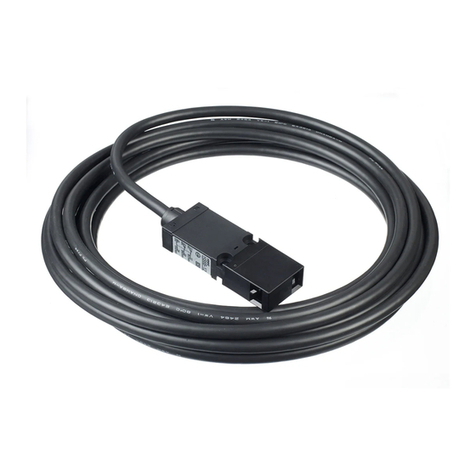
IDEC
IDEC HS6B Series User manual
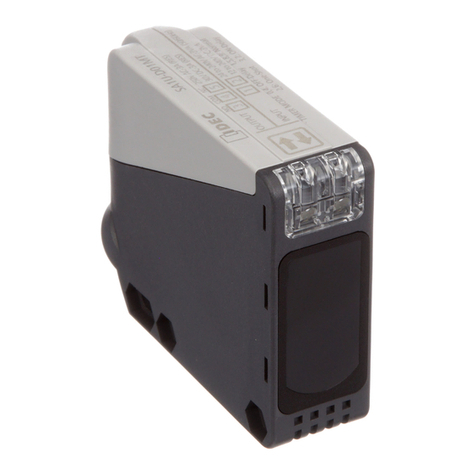
IDEC
IDEC SA1U Series User manual

IDEC
IDEC HS5L Series User manual
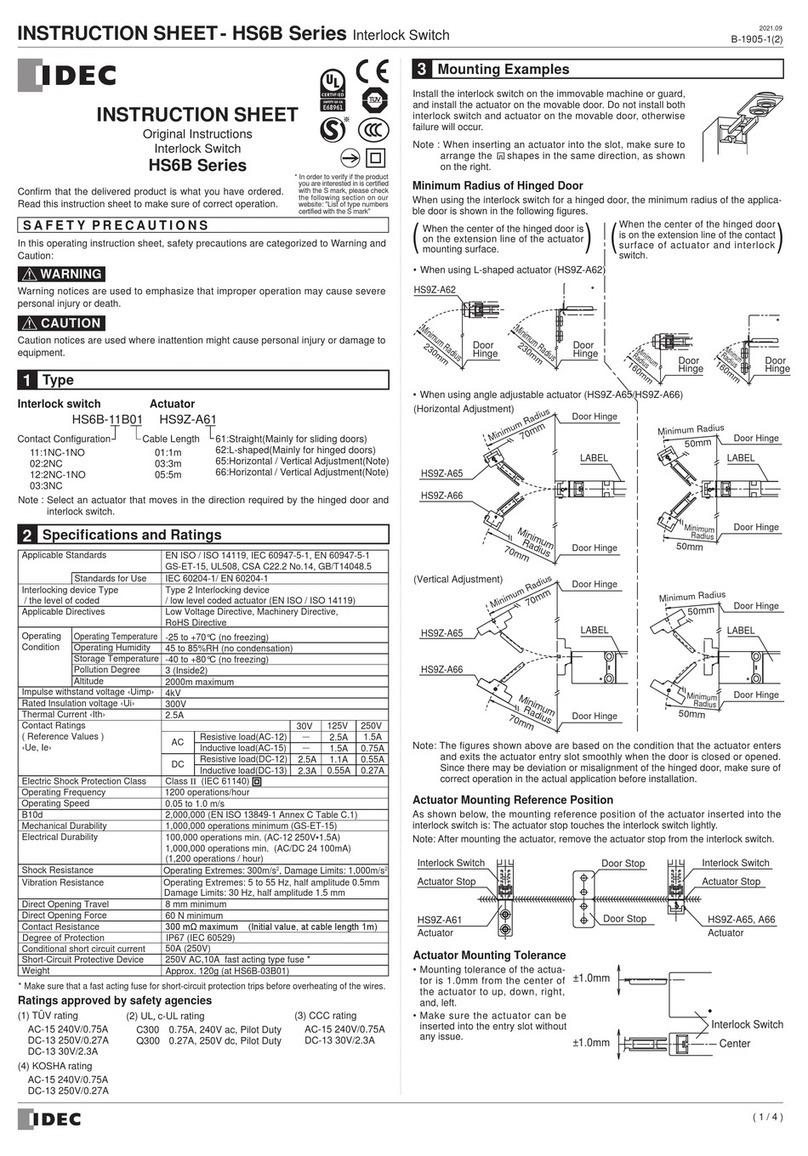
IDEC
IDEC HS6B Series User manual
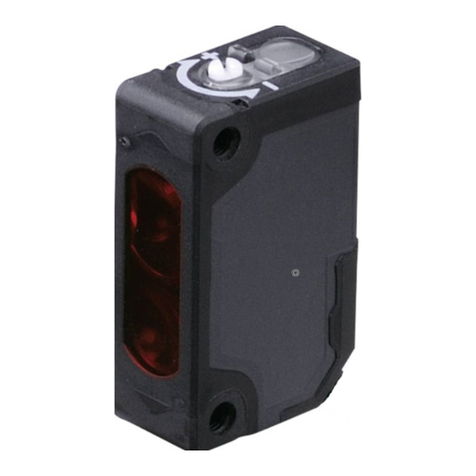
IDEC
IDEC SA1E Series User manual

IDEC
IDEC HS5E Series User manual
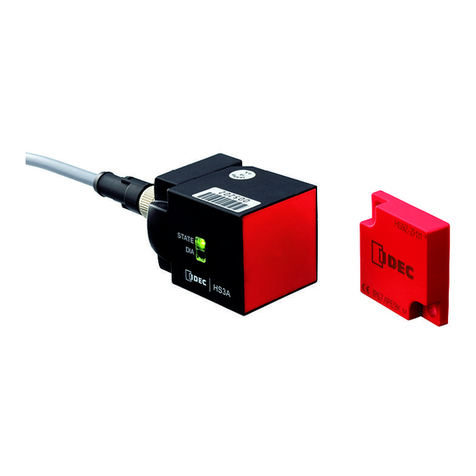
IDEC
IDEC HS3A Series User guide
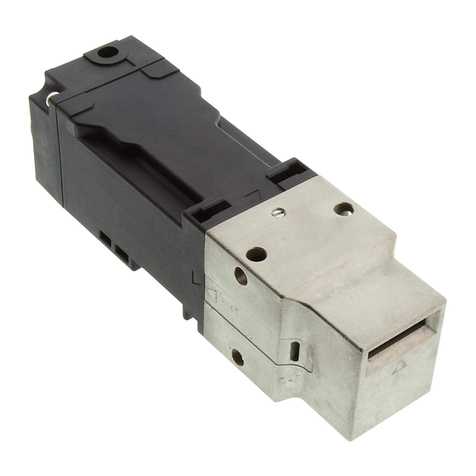
IDEC
IDEC HS1T Series User manual

IDEC
IDEC SA1E Series User manual
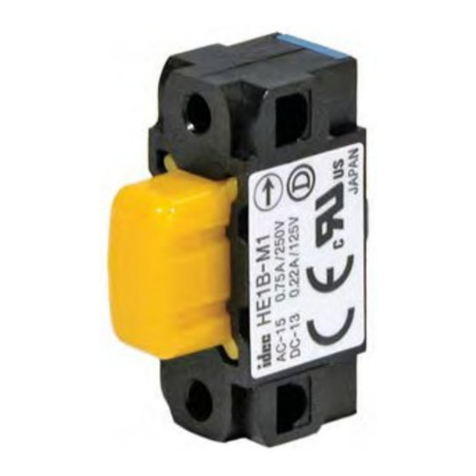
IDEC
IDEC HE1B Series User manual
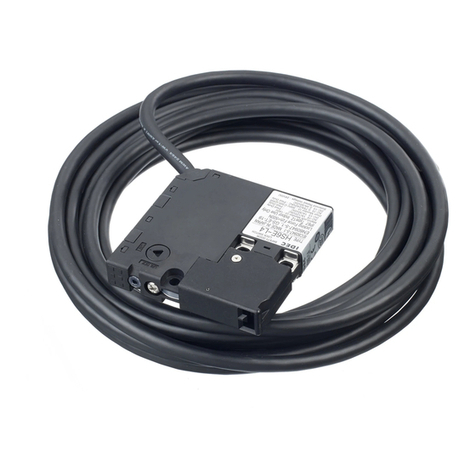
IDEC
IDEC HS6E Series User manual
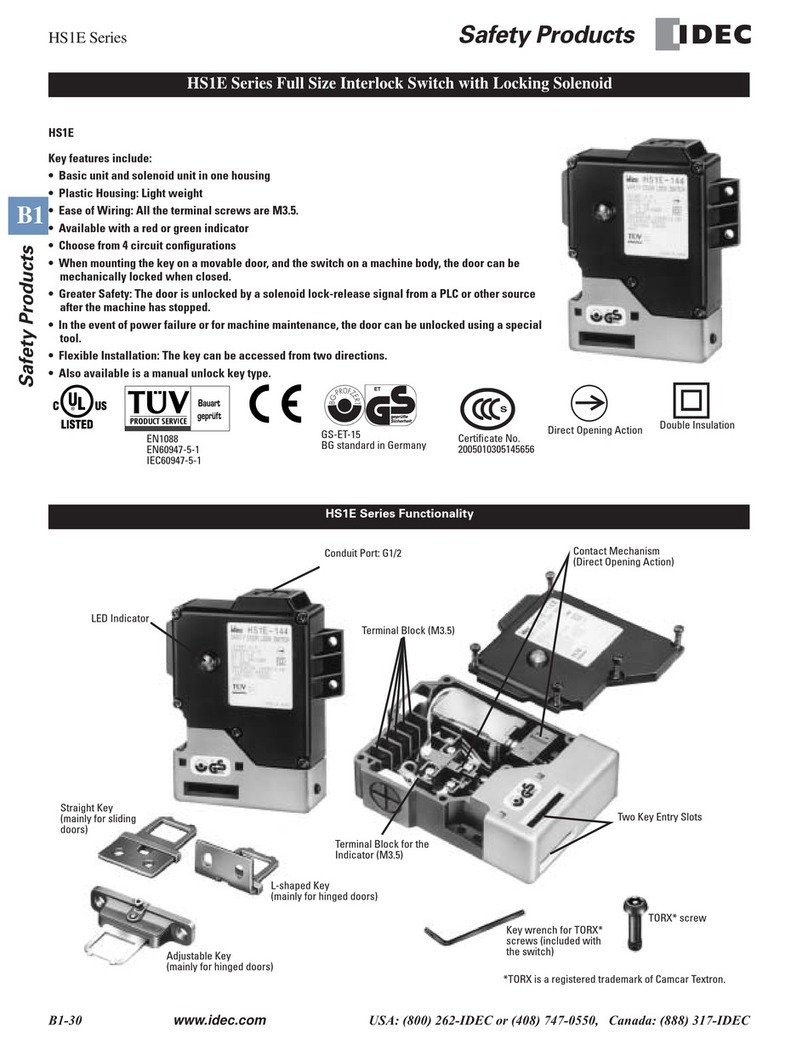
IDEC
IDEC HS1E Series User manual
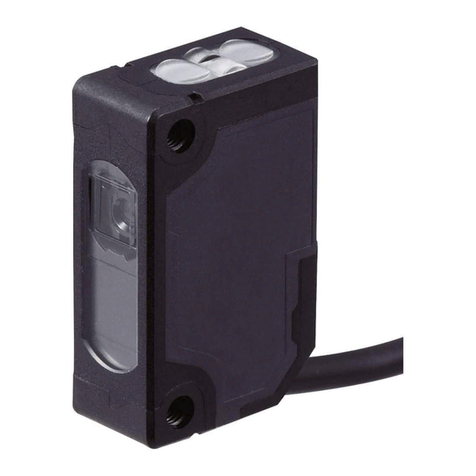
IDEC
IDEC SA1E-L Series User manual

IDEC
IDEC HS1C Series User manual
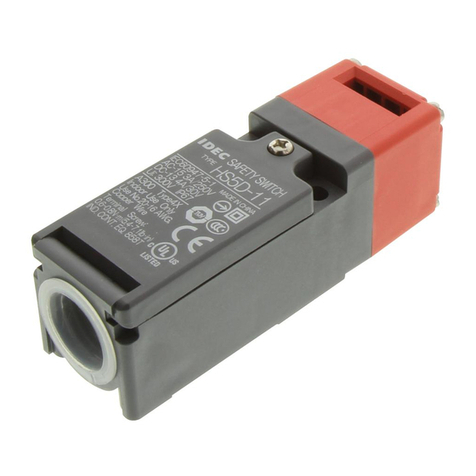
IDEC
IDEC HS5D-11 User manual
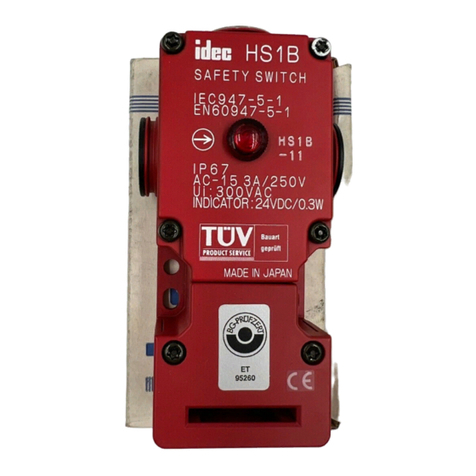
IDEC
IDEC HS1C Series User manual
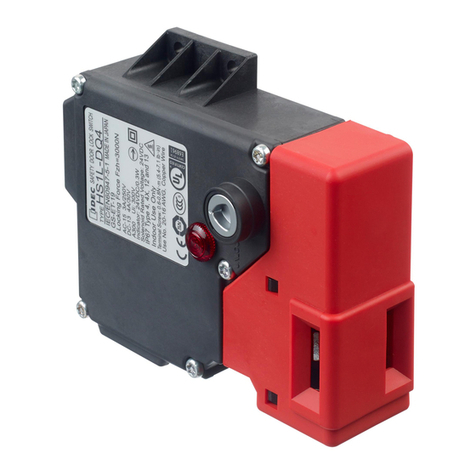
IDEC
IDEC HS1L Series User manual
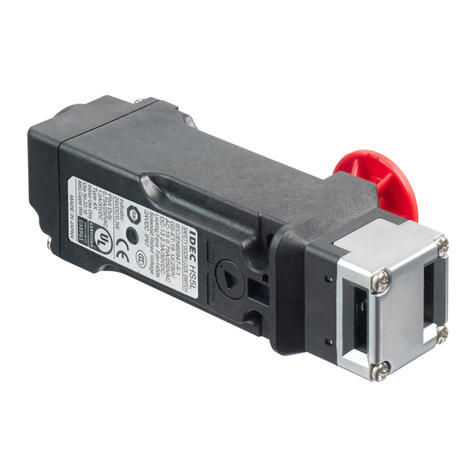
IDEC
IDEC HS5L Series User manual
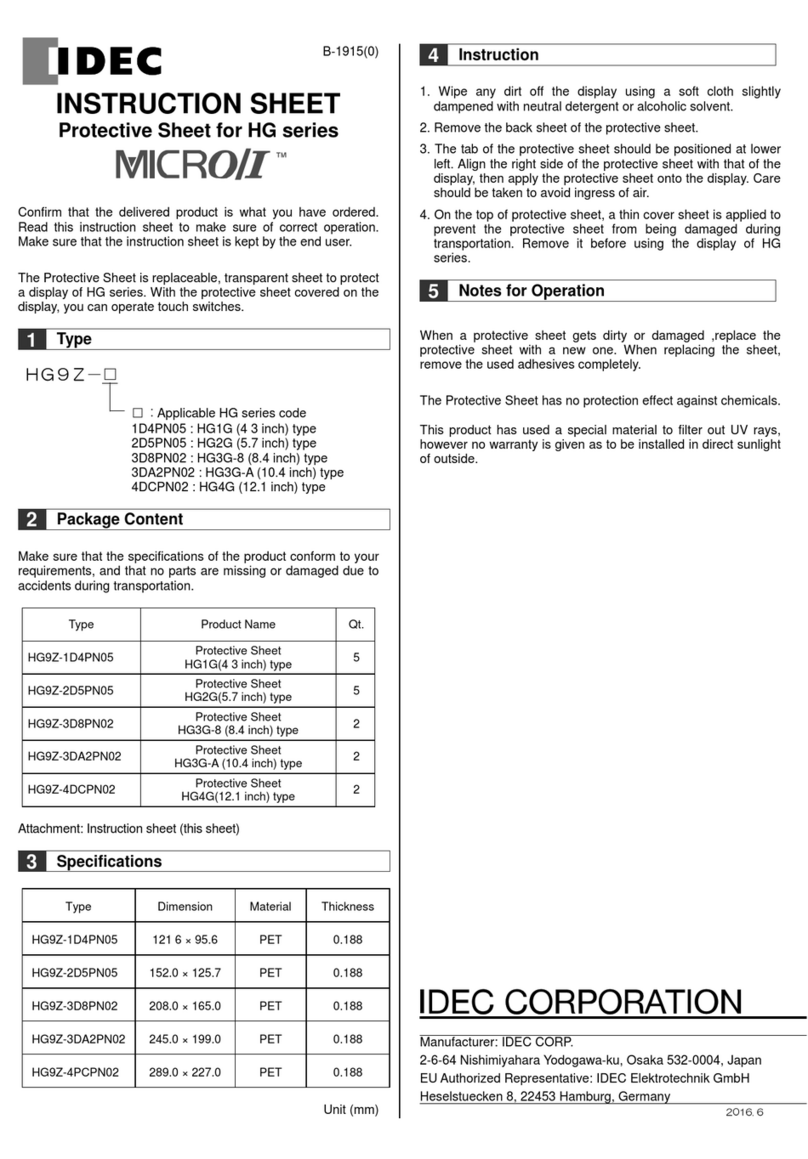
IDEC
IDEC MICRO/I HG9Z-1D4PN05 User manual
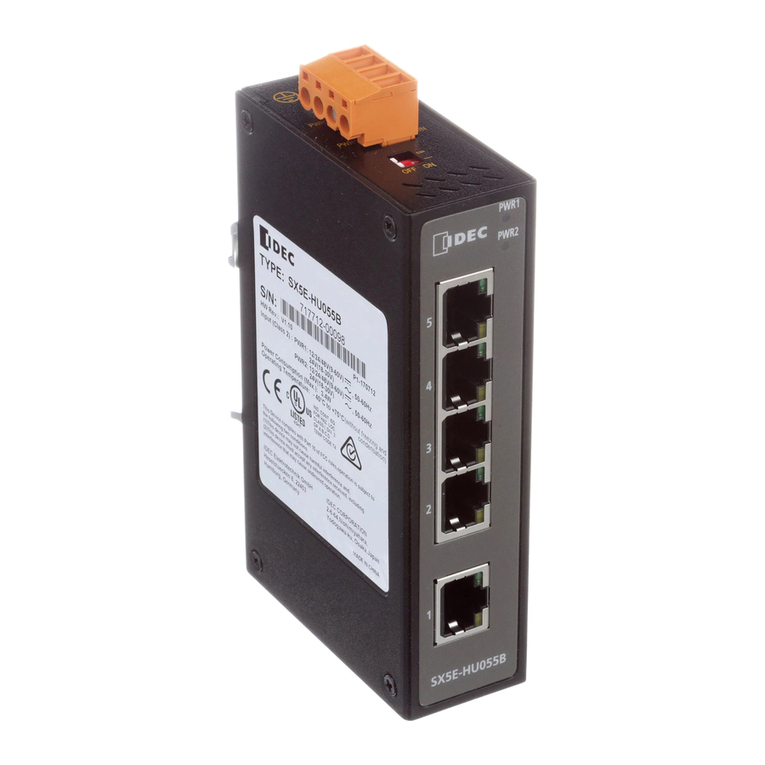
IDEC
IDEC SX5E Series User manual
